We are excited to embark on a series of teardowns to explore the inner workings of various devices. In this particular teardown, our focus will be on the 1st-Generation of IKEA-SONOS SYMFONISK Speaker Lamp, unraveling its captivating inner workings.
Please note that due to prior testing, certain screws, wires, and components have been temporarily removed from the appliance and may not be present during this analysis. However, for the purpose of this exercise, we have meticulously reassembled the SYMFONISK to its approximate original state.
The SYMFONISK series, introduced in 2019, represents a remarkable partnership between IKEA and SONOS, resulting in a collection of innovative devices.
Outer Housing
In our current examination, we focus on a lampstand featuring an exceptional Smart/WiFi speaker, cleverly designed with a synthetic cloth mesh covering. This removable and washable dust cover serves both functional and aesthetic purposes, as shown below:
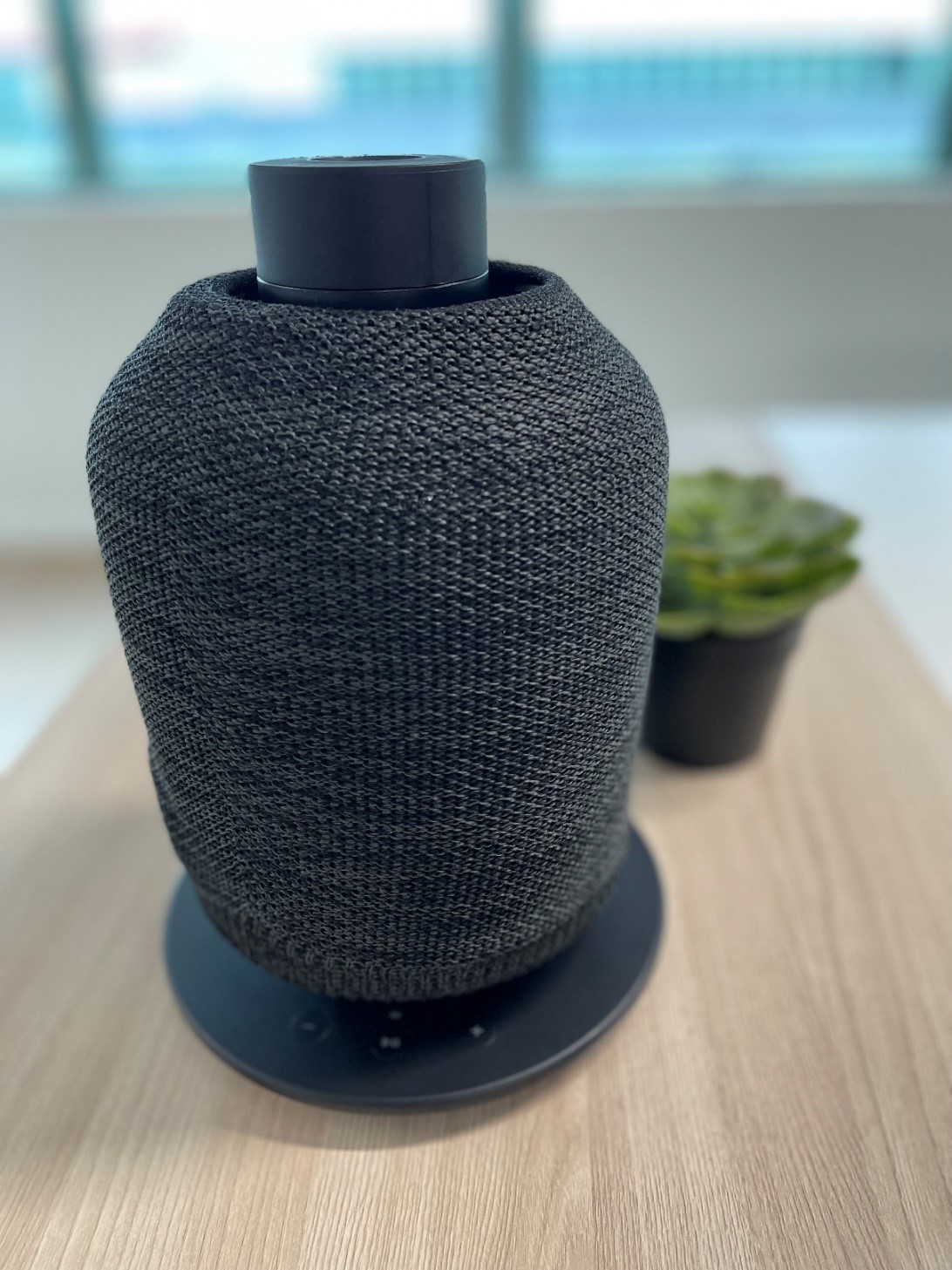
When the dust cover is gently lifted, it unveils the cylindrical plastic casing, ingeniously designed with perforations to facilitate the transmission of sound.
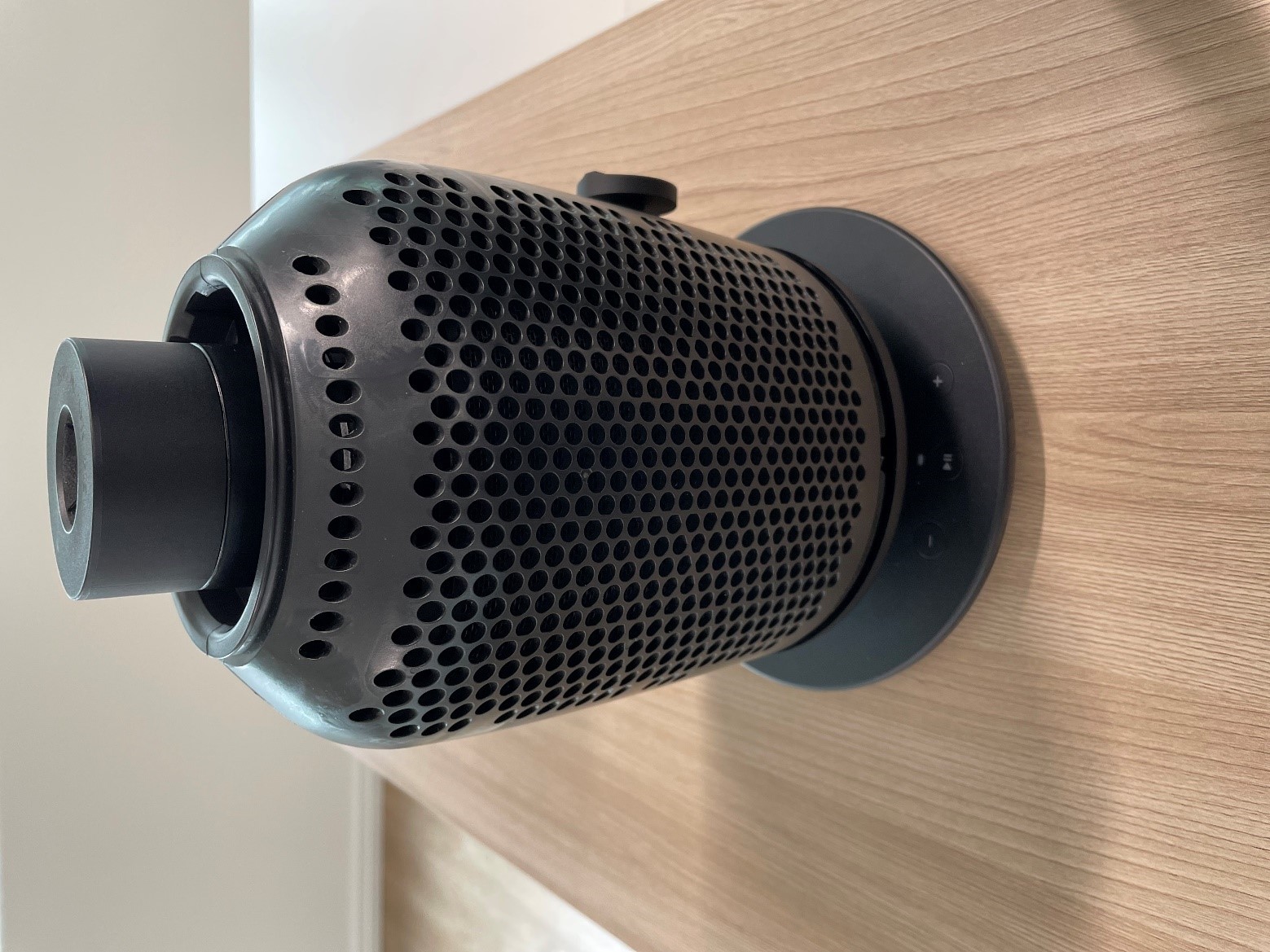
Once the cylindrical plastic cover is removed, a delightful sight awaits us: a speaker unit adorned with a sleek metallic mesh cover, reminiscent of the exquisite design found in the acclaimed SONOS ONE speaker.
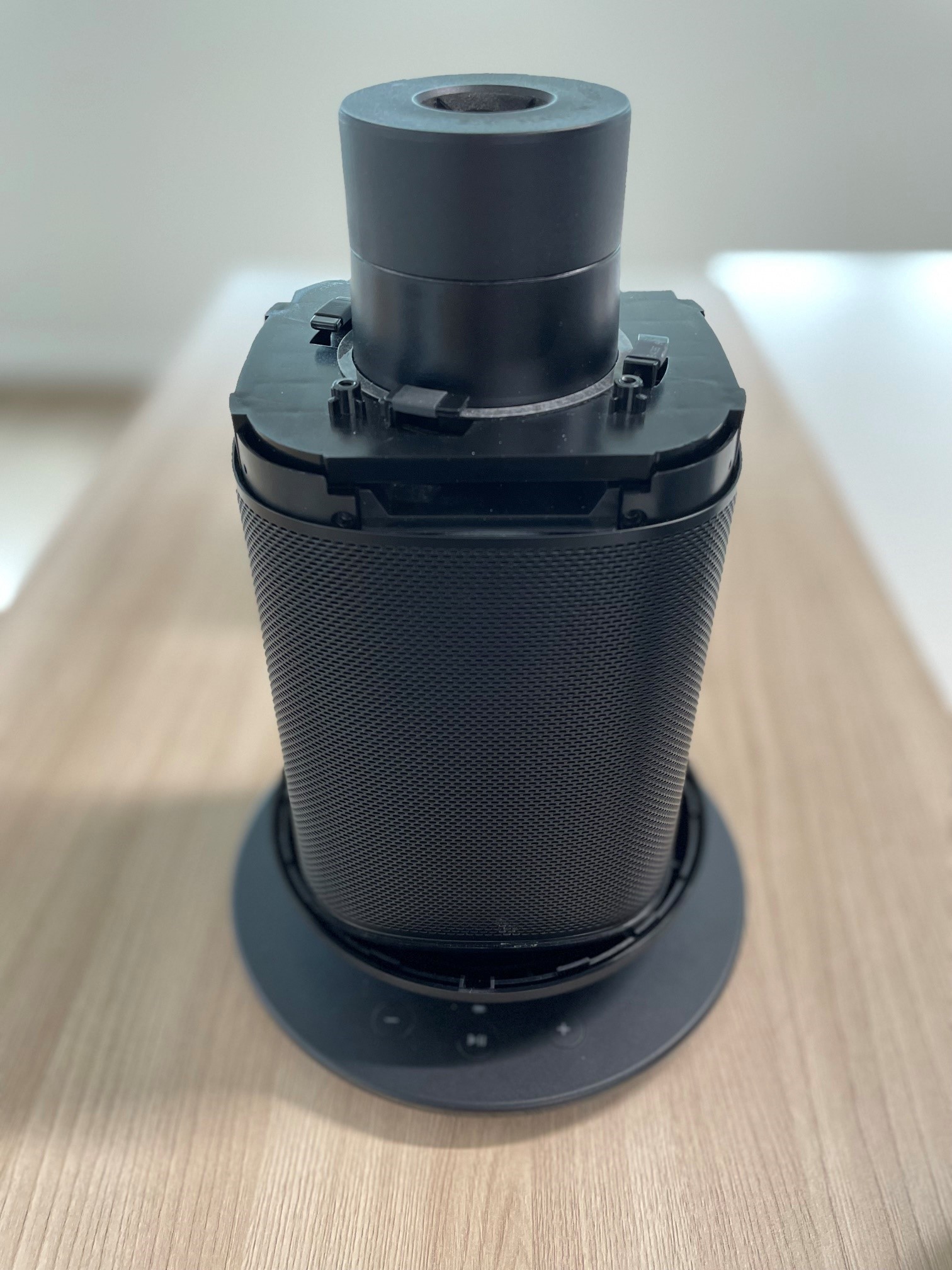
With the removal of the sleek metallic mesh cover, a delightful sight awaits us: a pair of elegant speakers gracefully positioned on a circular plastic base plate. One is a charming smaller tweeter, while the other stands tall as a larger mid-bass speaker.
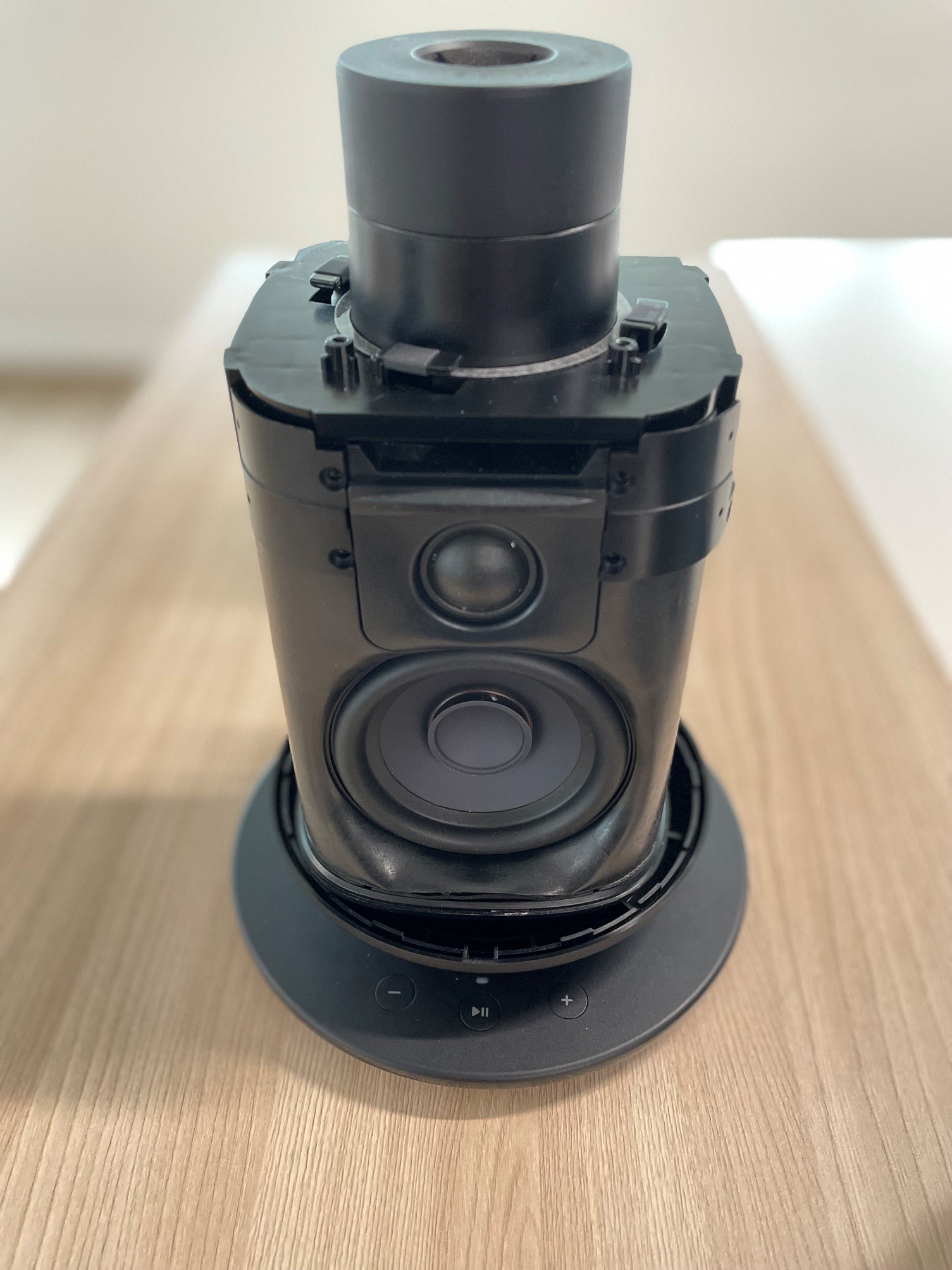
Upon carefully disassembling the lampstand, the plastic base plate, and the back casing, a fascinating view unfolds before us—the circuit board, expertly mounted on the rear surface.
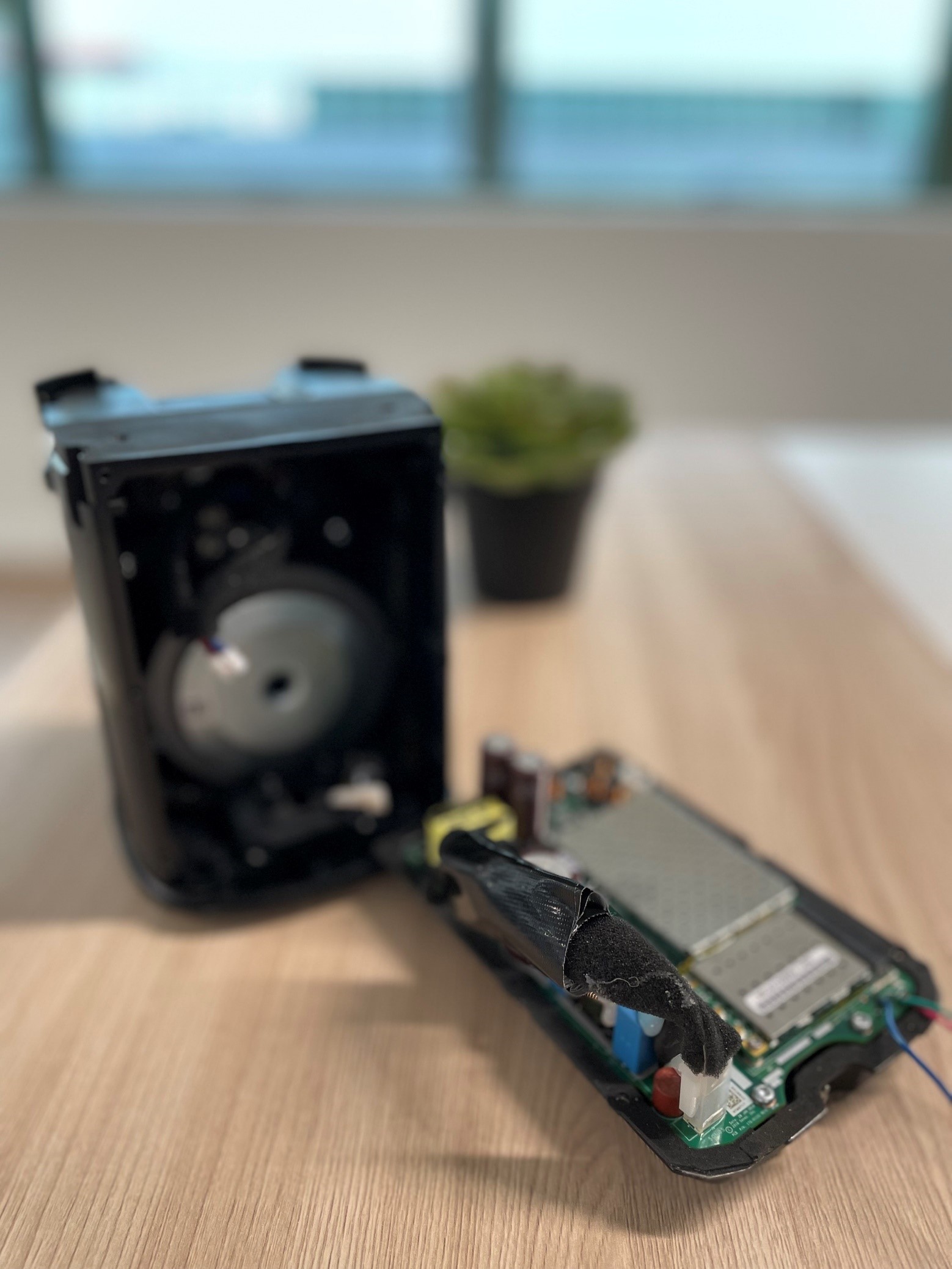
The circuit board is securely attached to the back casing using T10 Torx bolts.
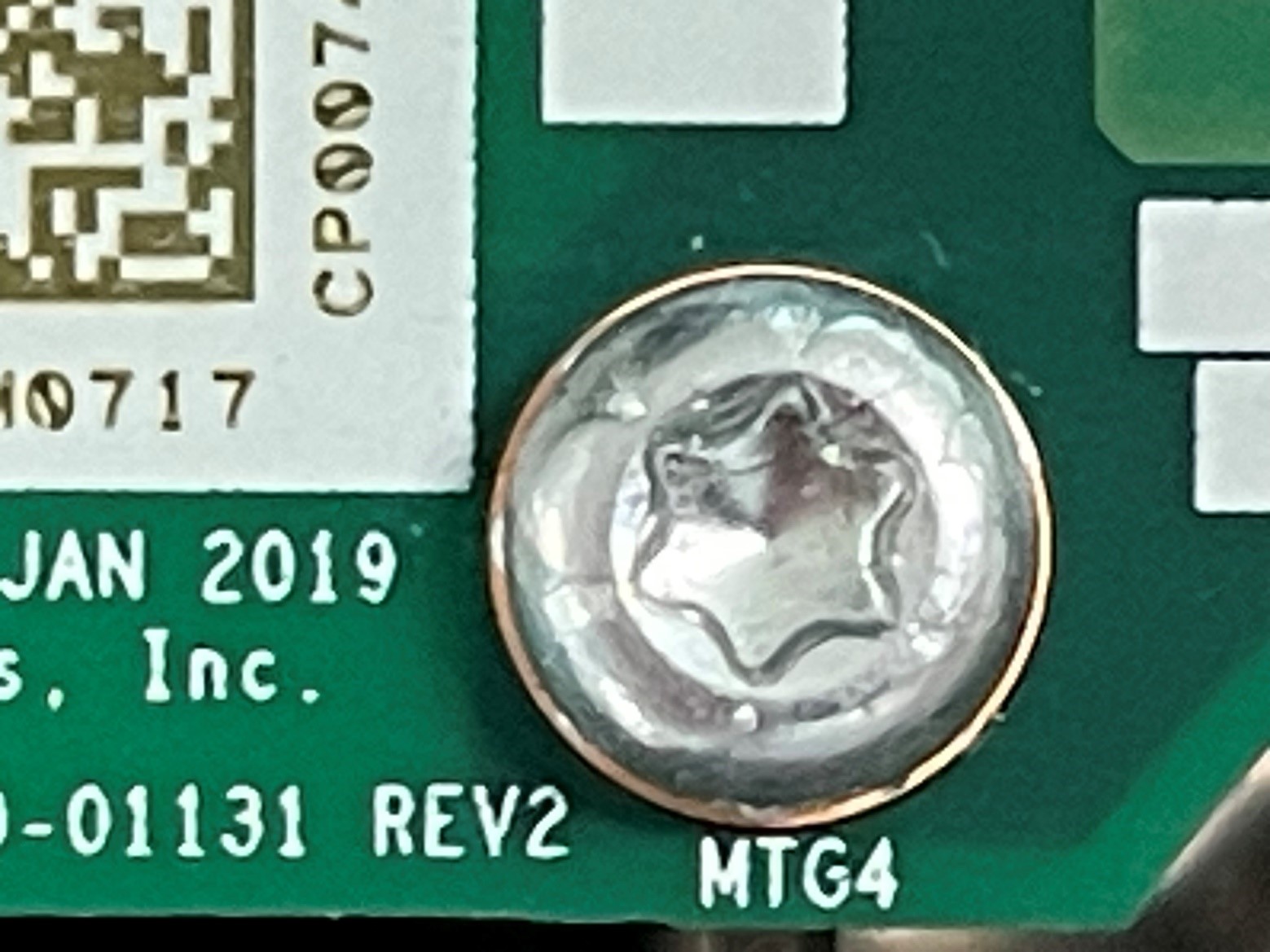
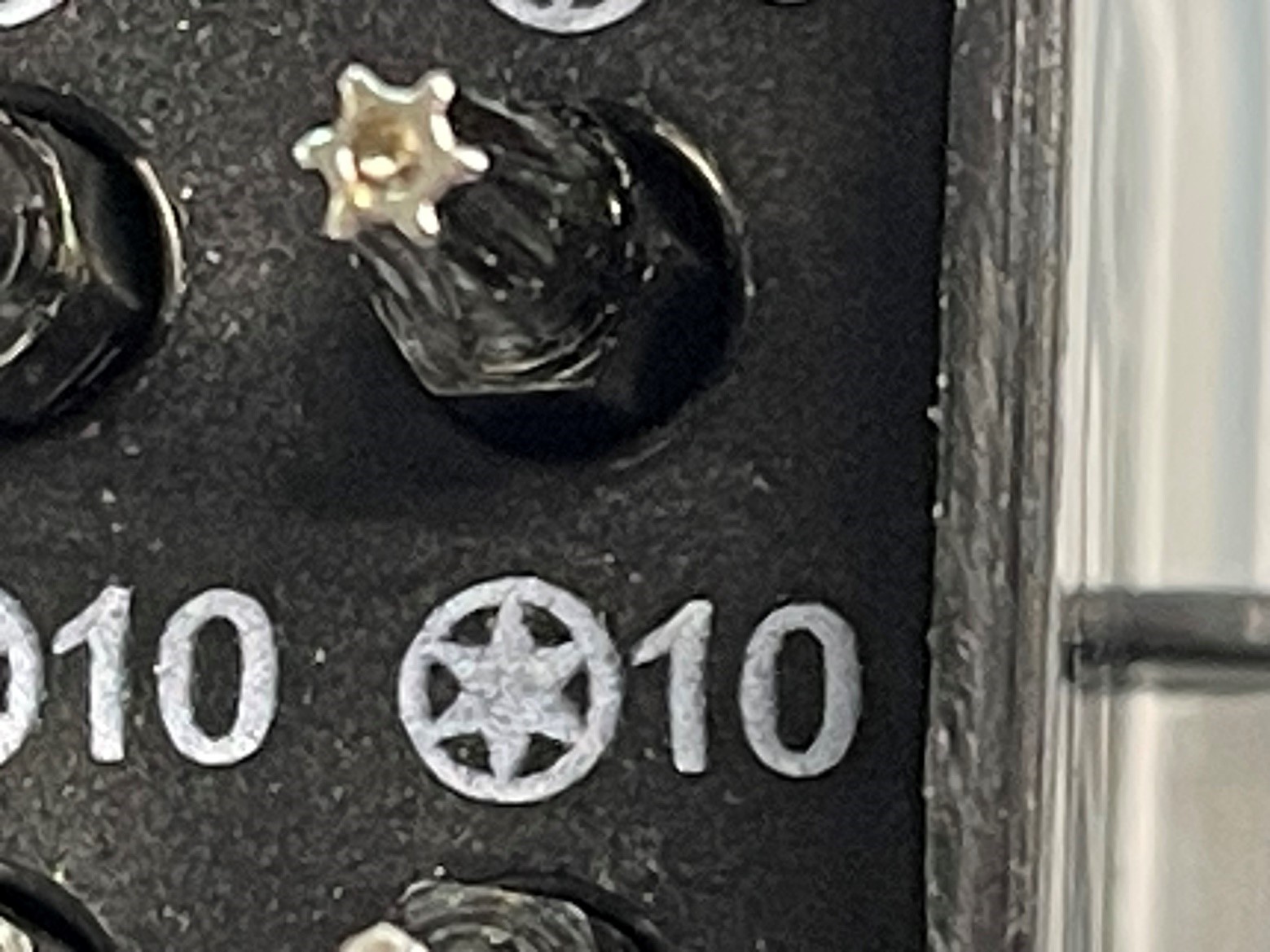
WiFi Antenna
To achieve optimal wireless connectivity, two WiFi antennae are strategically positioned at the upper front corners, just above the speakers. These antennas are internally labeled by SONOS as SON 105-00121 and SON 105-00122.
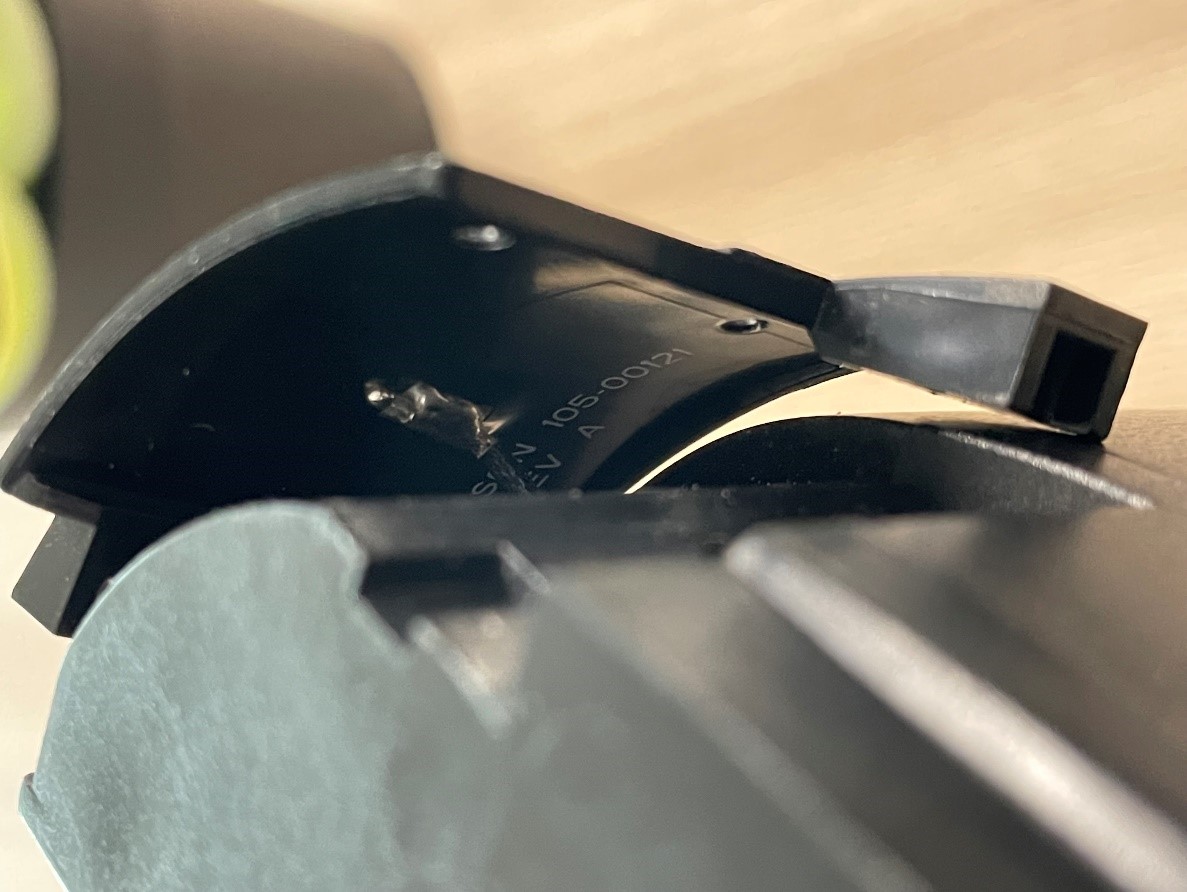
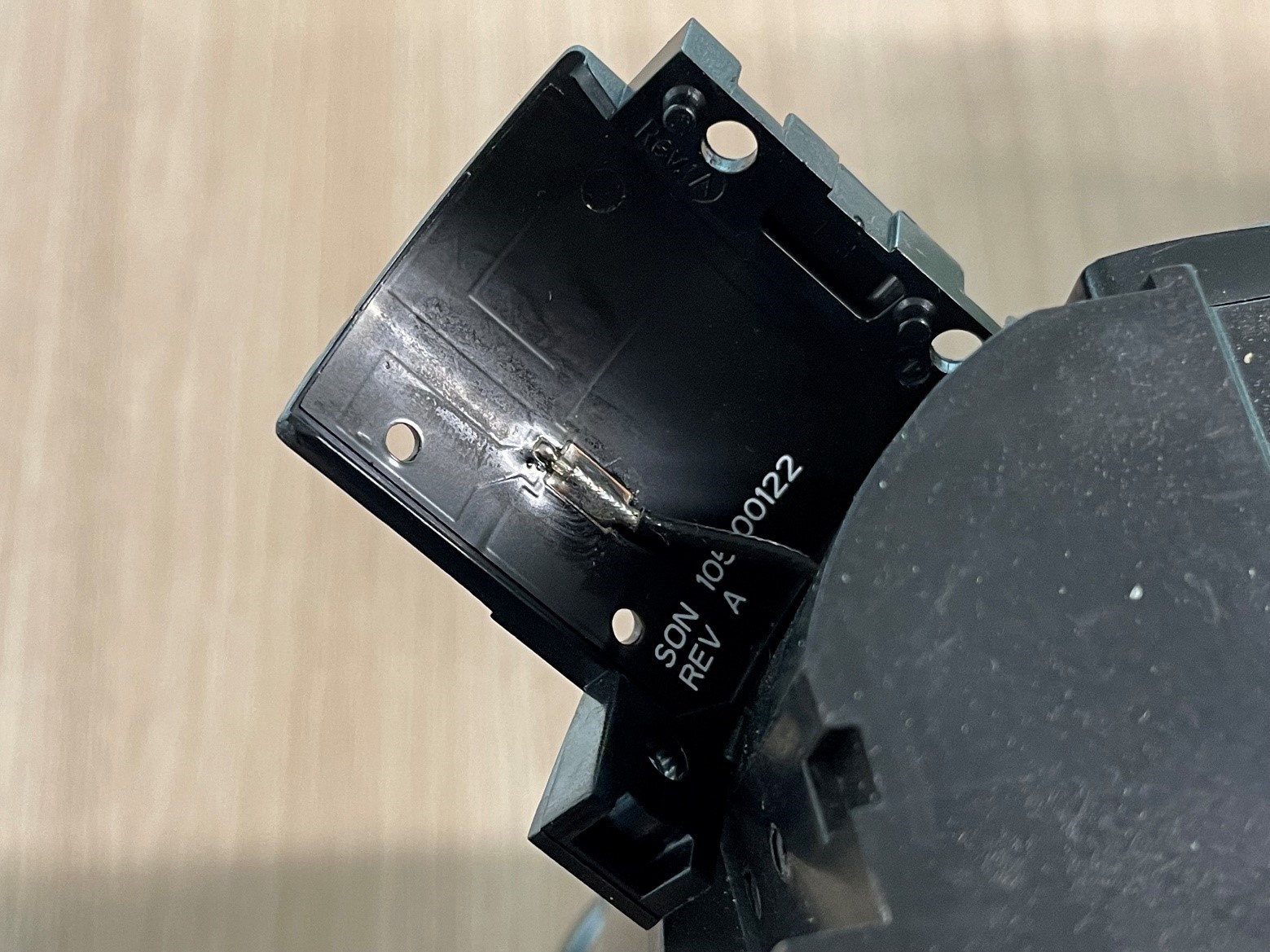
Power Socket/Cable
The Wellshin Power Socket features a design that closely resembles the widely used IEC 60320-1 (C8) configuration. This particular configuration, known as IEC 60320-1 (C8) Appliance Inlet, Screw Type, is typically rated for a maximum current of 2.5A.
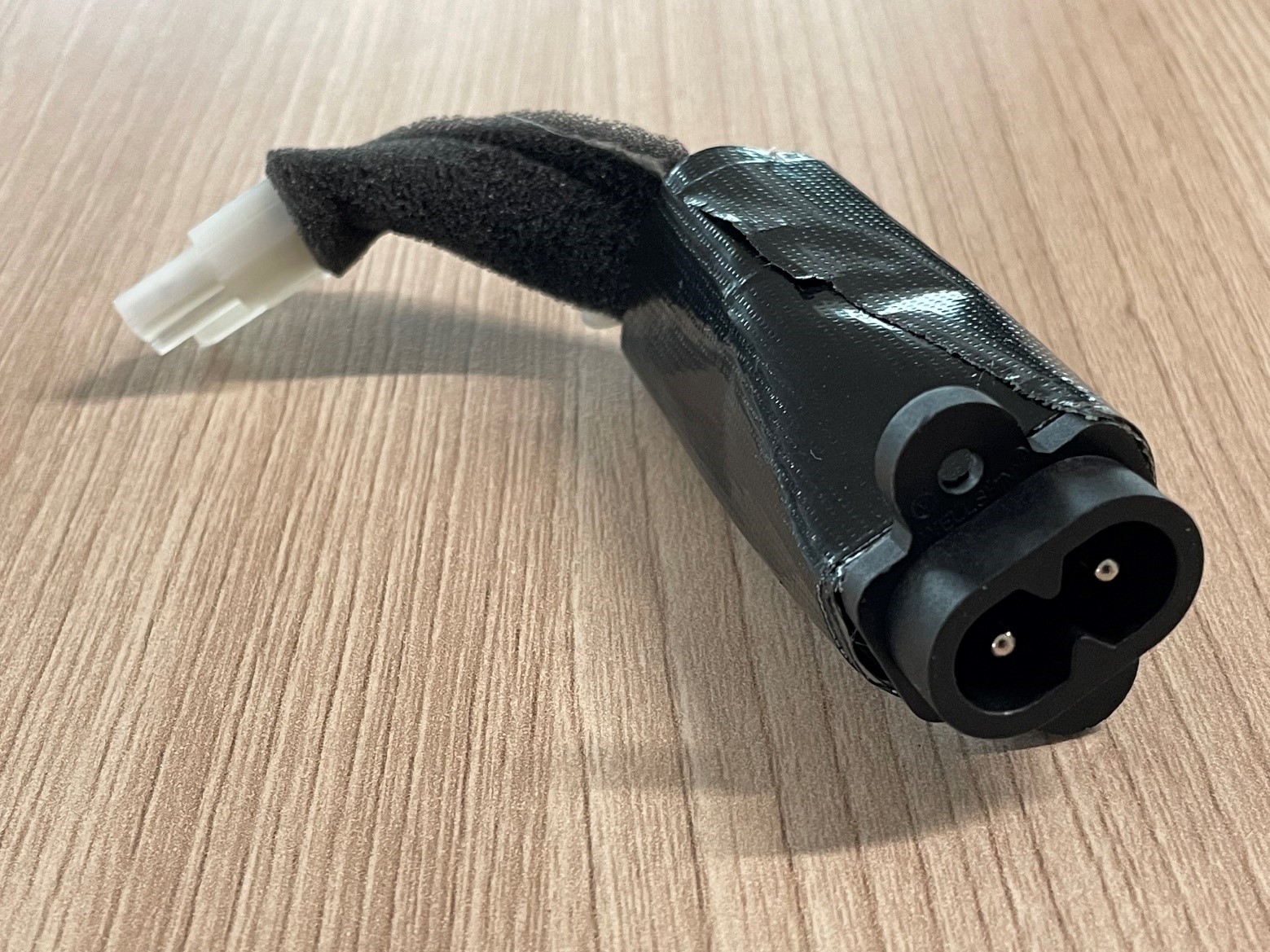
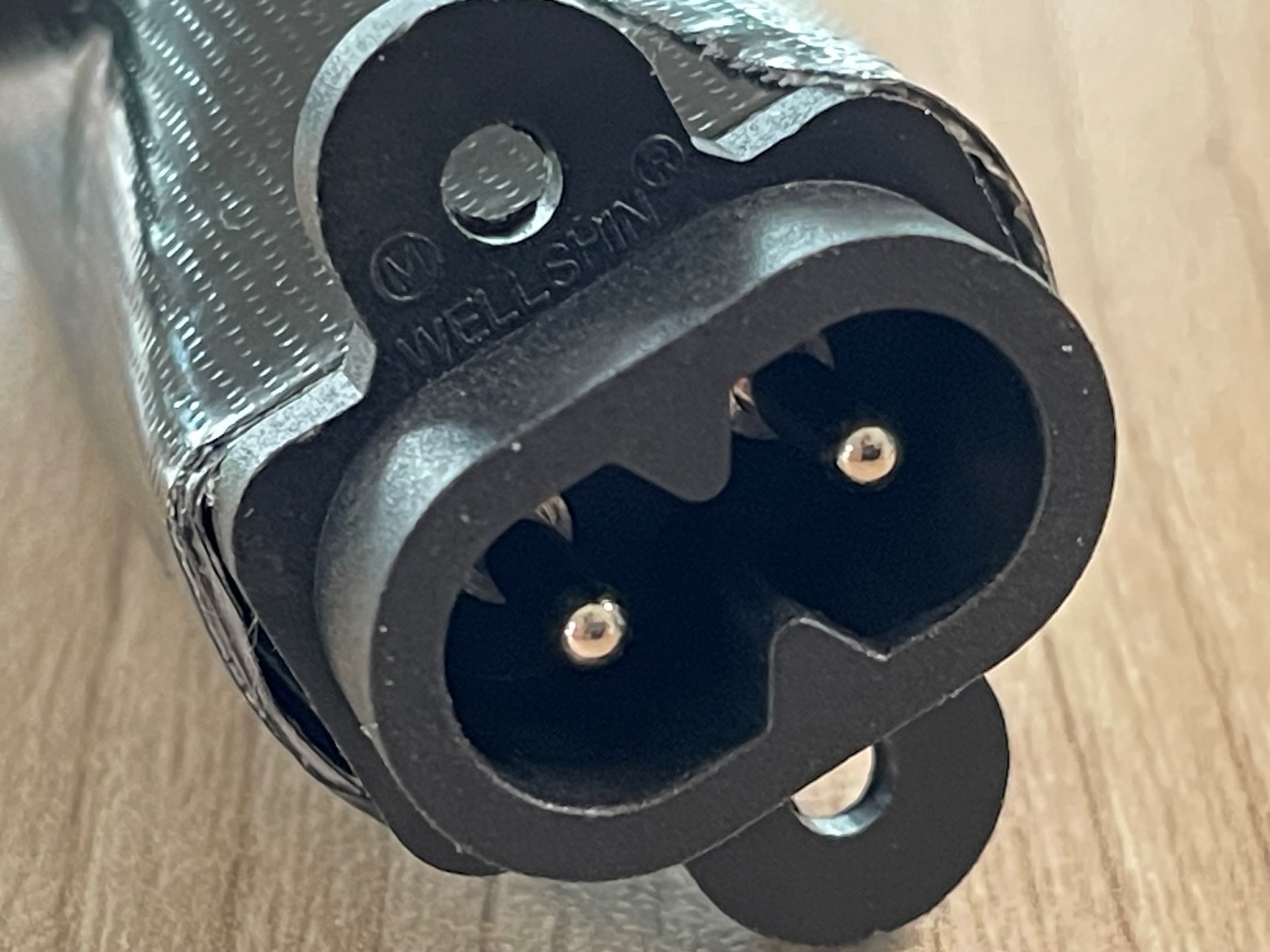
The upper side of the Main Circuit Board
The Main Circuit Board consists of several functional blocks arranged in a clockwise manner starting from the bottom-left corner. These blocks are as follows:
Power Connector: This connector allows the board to be connected to an AC power source.Power Protection: This block provides protection mechanisms to safeguard the board from power fluctuations or surges.EMI/RFI Filter: The EMI (Electromagnetic Interference)/RFI (Radio Frequency Interference) filter filters out any unwanted electromagnetic noise from the AC power input.Flyback Converter Circuitry: The SYMFONISK adopted this switched-mode power supply (SMPS) topology, using a transformer as a mutually coupled inductor to store energy when current passes through and releasing the energy when the power is removed. It is a low-cost design, suitable for AC-DC conversion of low powered devices, typically below 150 Watts.Buck Converter: Steps down the output voltage of the Flyback Converter to a stable and regulated voltage (3.3V) used by most of the circuit.Audio: This block handles audio processing and functionality on the board.Shielded Enclosure: The shielded enclosure houses important components such as the Ethernet transceiver, processor (with a thermal pad), and memory. The processor, being the component that generates the most heat, utilizes the thermal pad to transfer excess heat to the shielded enclosure for efficient cooling.PCI-E Wireless Card: This card provides wireless connectivity capabilities to the board via the PCI Express interface.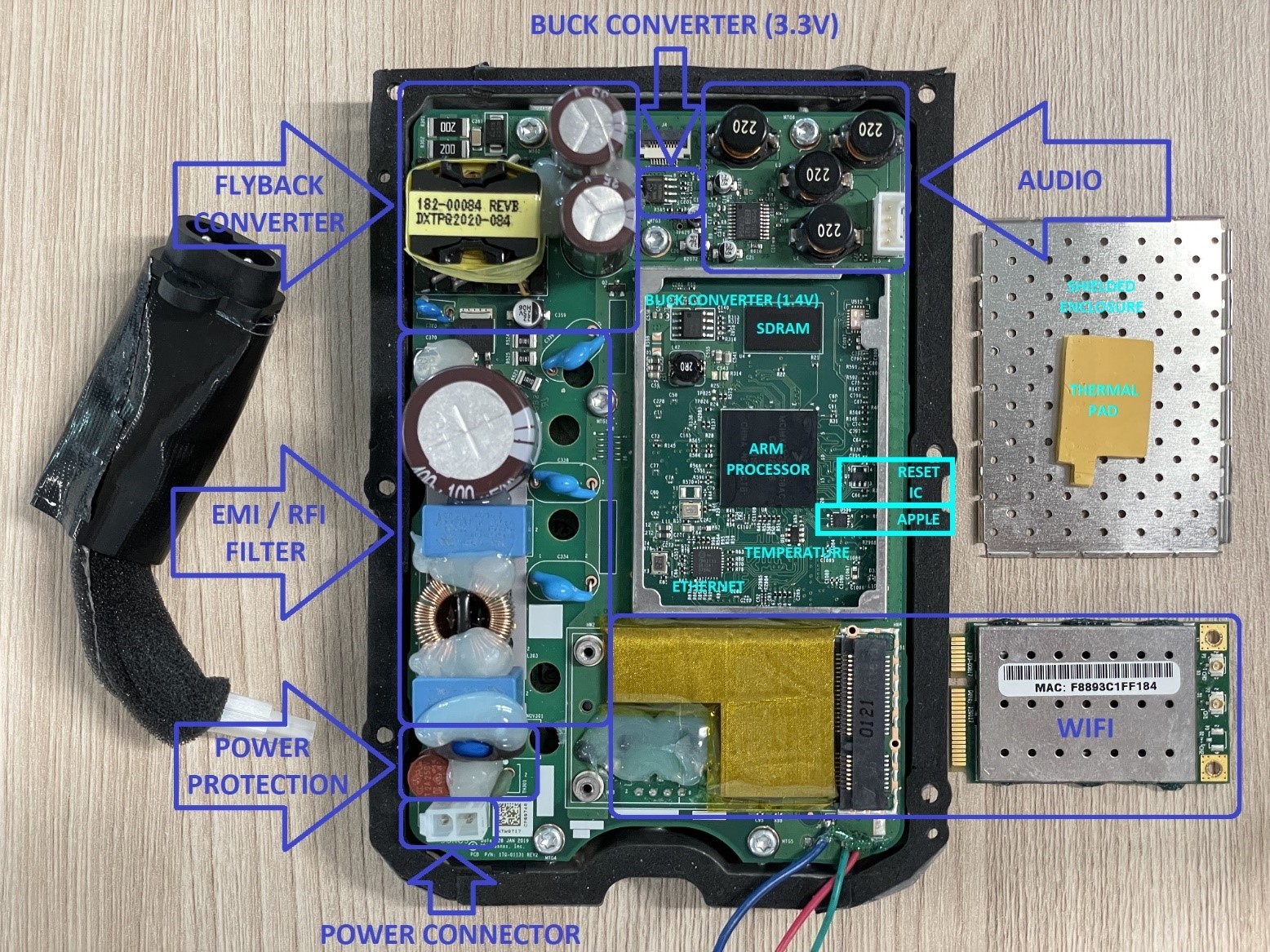
The lower side of the Main Circuit Board
To access the Main Circuit Board inside the back casing of the SYMFONISK, we need to remove the six Torx T10 mounting screws. Once removed, we can easily take out the board.
Upon inspecting the lower side of the main circuit board, we can identify several important functional blocks. Let’s go through them in a clockwise order, starting from the bottom-left corner:
Network Isolation Transformer: Located near the Ethernet Port, this component ensures proper electrical isolation between the network and the circuit board.Shielded Enclosure with Thermal Pad: This enclosure houses another Memory chip and is equipped with a Thermal Pad. The Thermal Pad acts as a conduit, efficiently transferring heat from the circuit board to the SYMFONISK case.Class D Audio Amplifier: This block handles audio amplification, providing high-quality sound output for the SYMFONISK.Flyback Converter Circuitry: Together with the other components on the upper side of the board, the components in this section manages the AC-DC conversion of the power supply for the device, ensuring stable and reliable operation.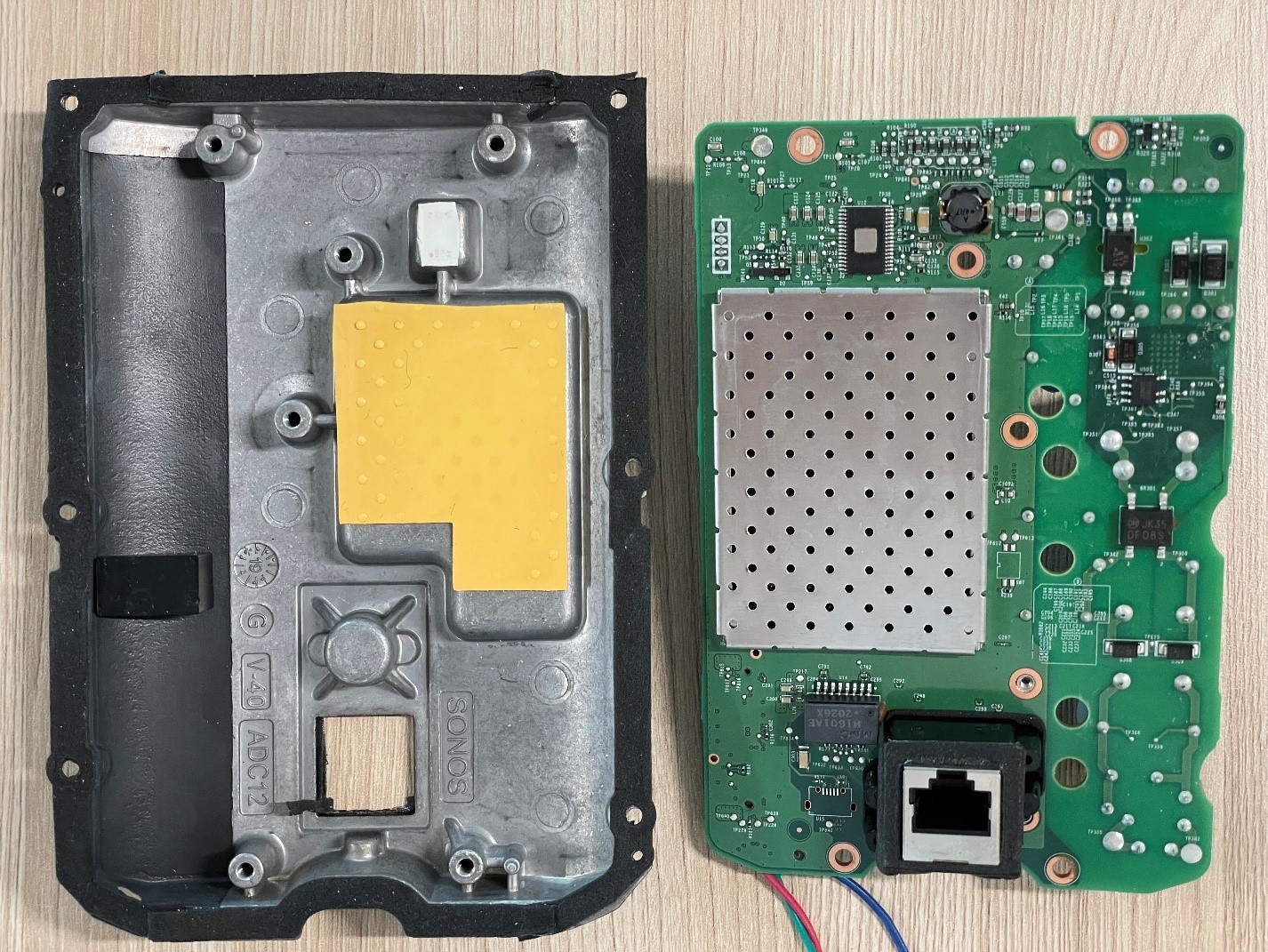
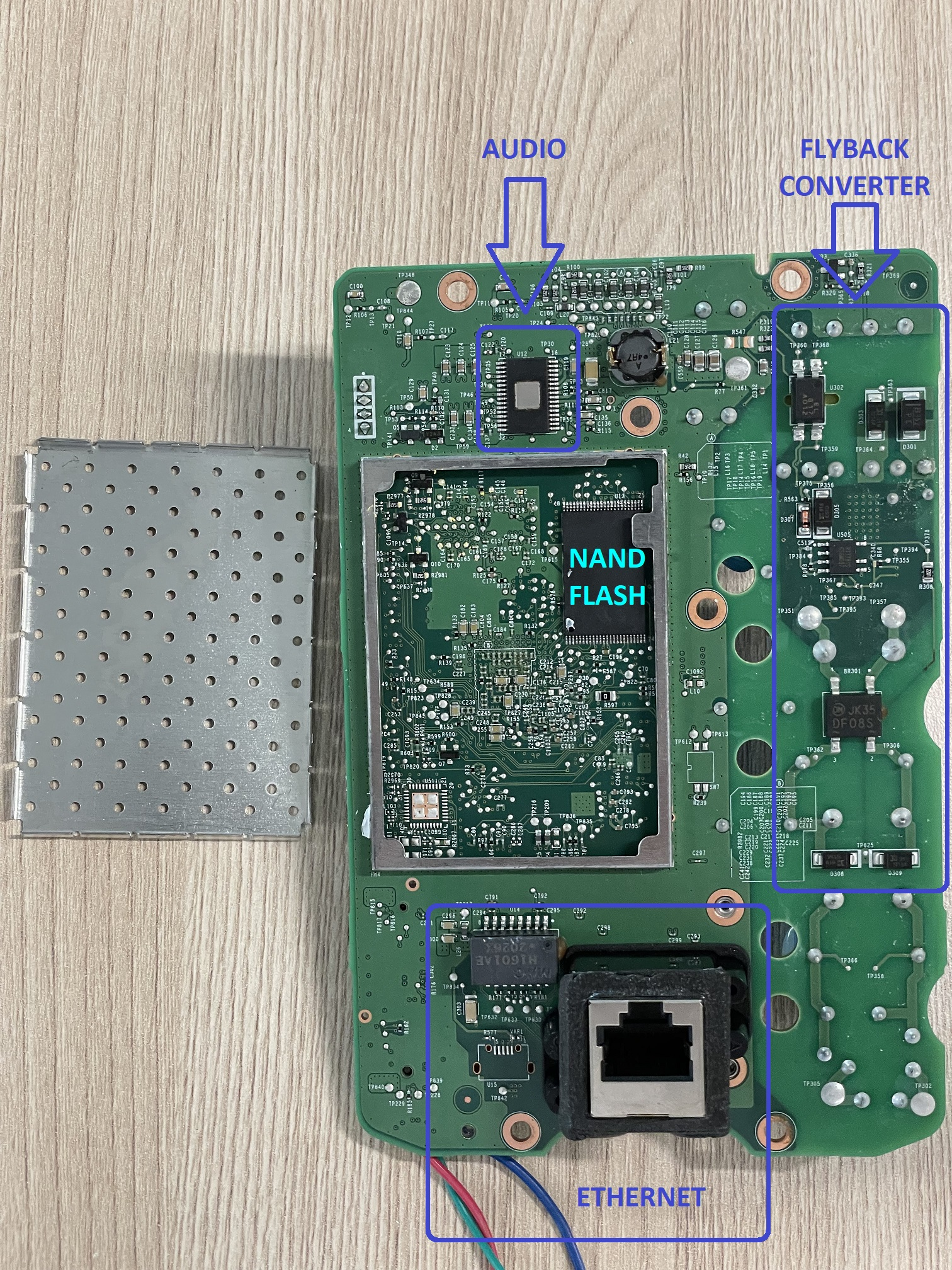
Power - Protection
Now, let’s examine the left side of the Main Circuit Board.
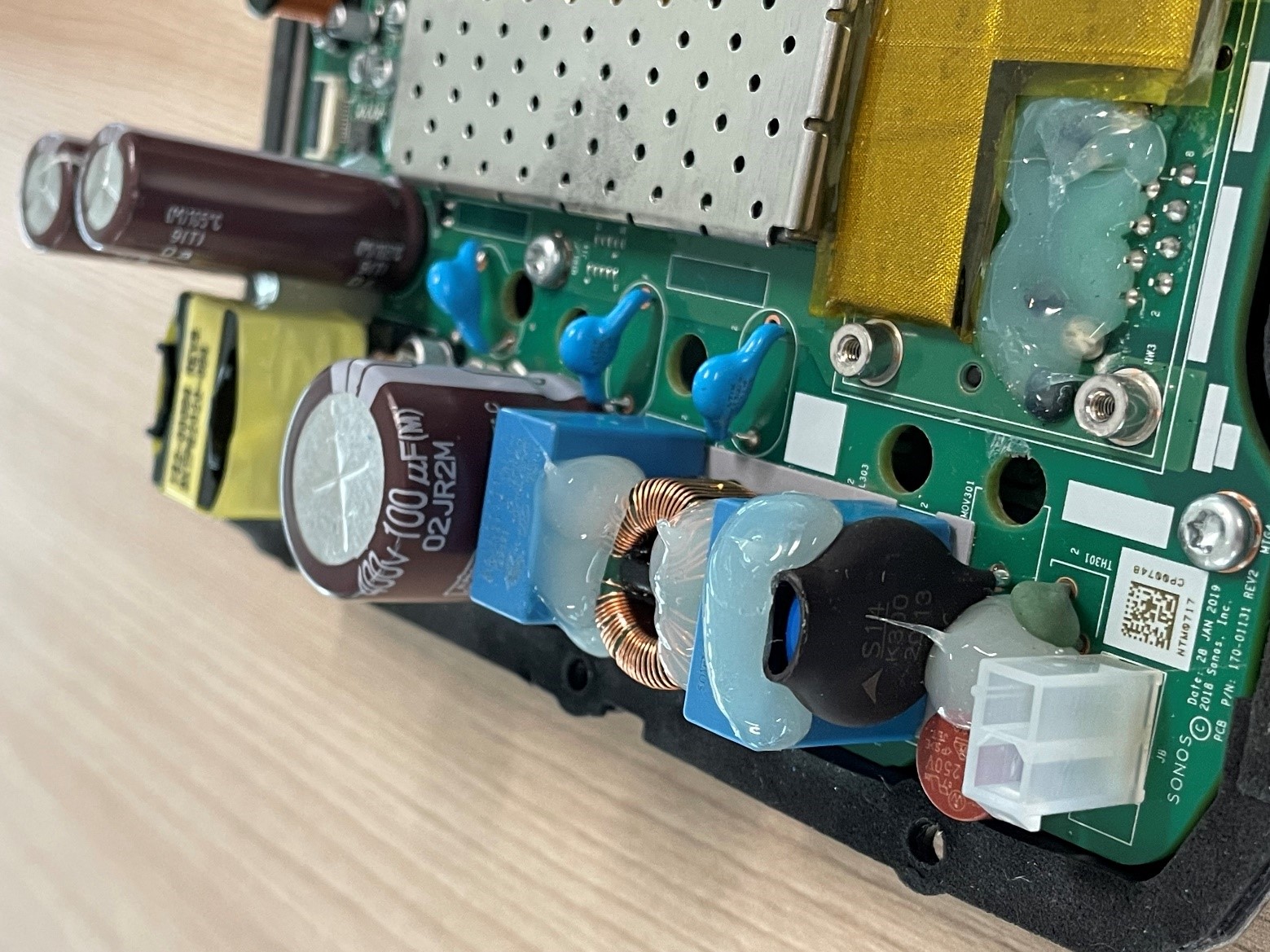
On this side, we observe a white 2-pin connector designed for the power cable. This connector has a keying mechanism, ensuring that the cable can only be inserted in the correct orientation. Additionally, there is a convenient small side protrusion that enables the power cable connector to securely latch into place.
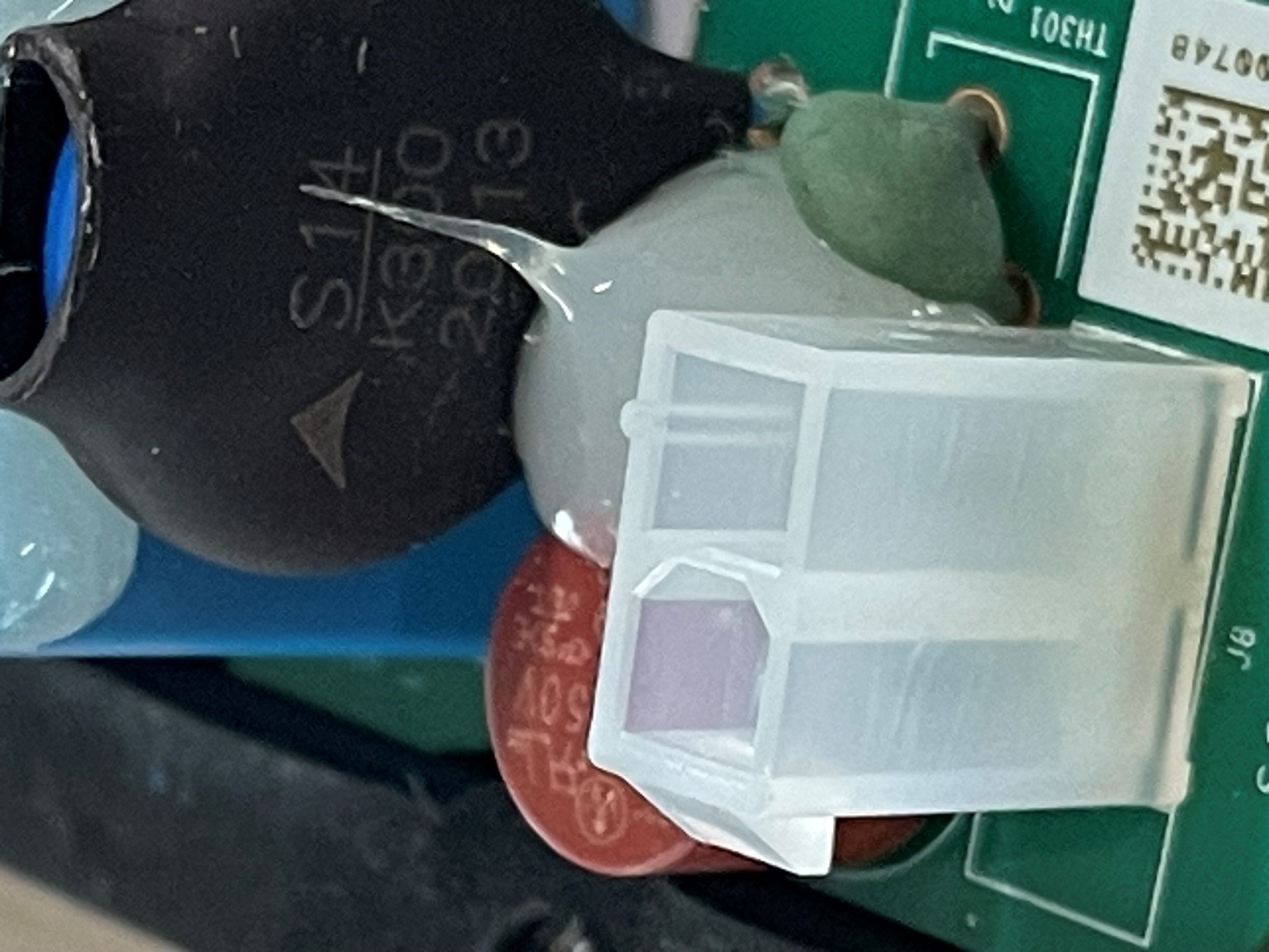
Right after the power connector, you’ll find a 2A 250V time lag fuse provided by Littlelfuse Wickmann.
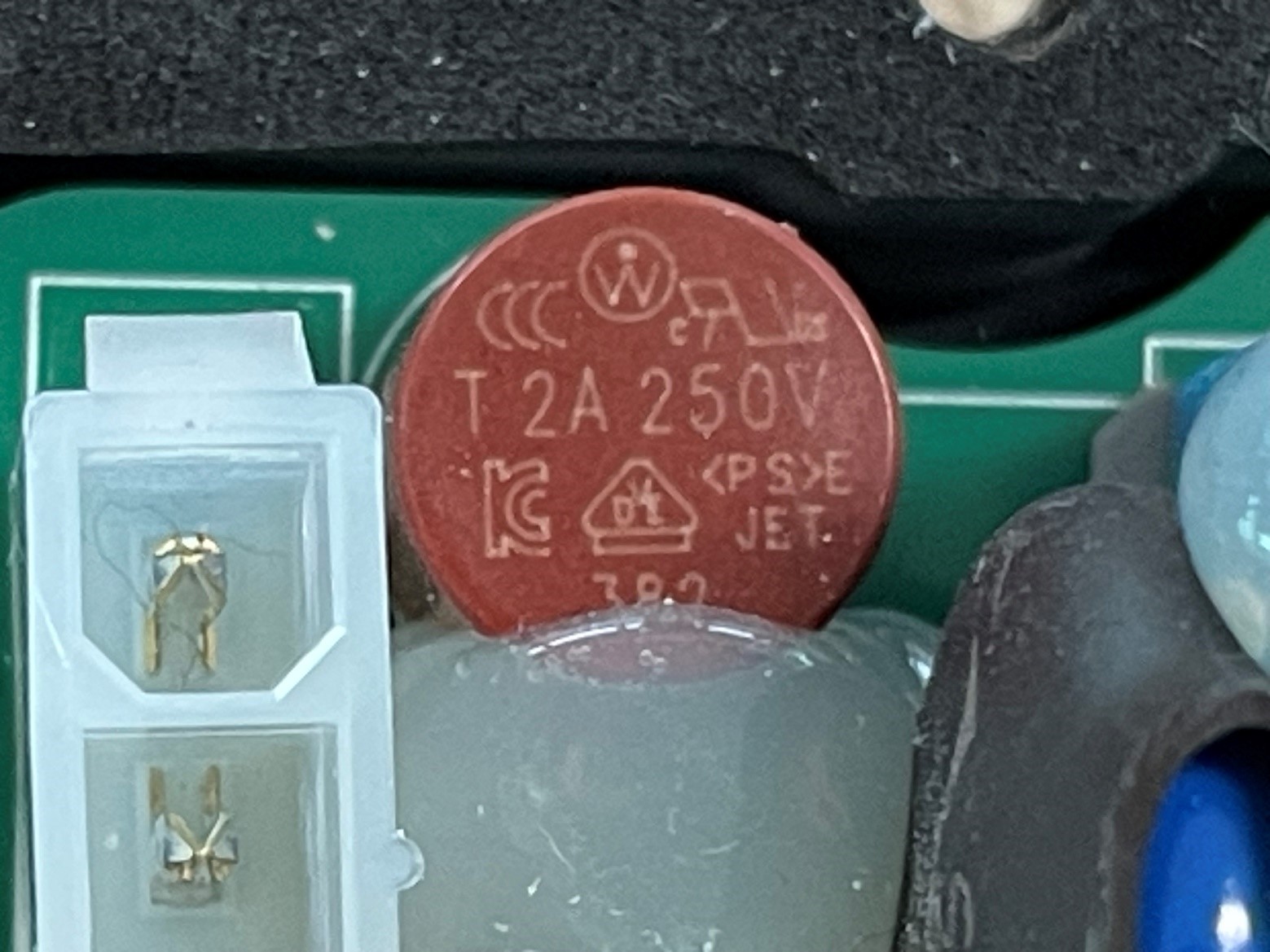
Next to it is a green NTC thermistor from the SCK series. This thermistor plays a crucial role in surge current protection. Specifically, when the device is powered on, the NTC thermistor restricts the initial rush of current due to its high resistance. As it heats up during energization, its resistance decreases to a few percent of its value at room temperature, effectively minimizing power loss compared to using a fixed resistor.
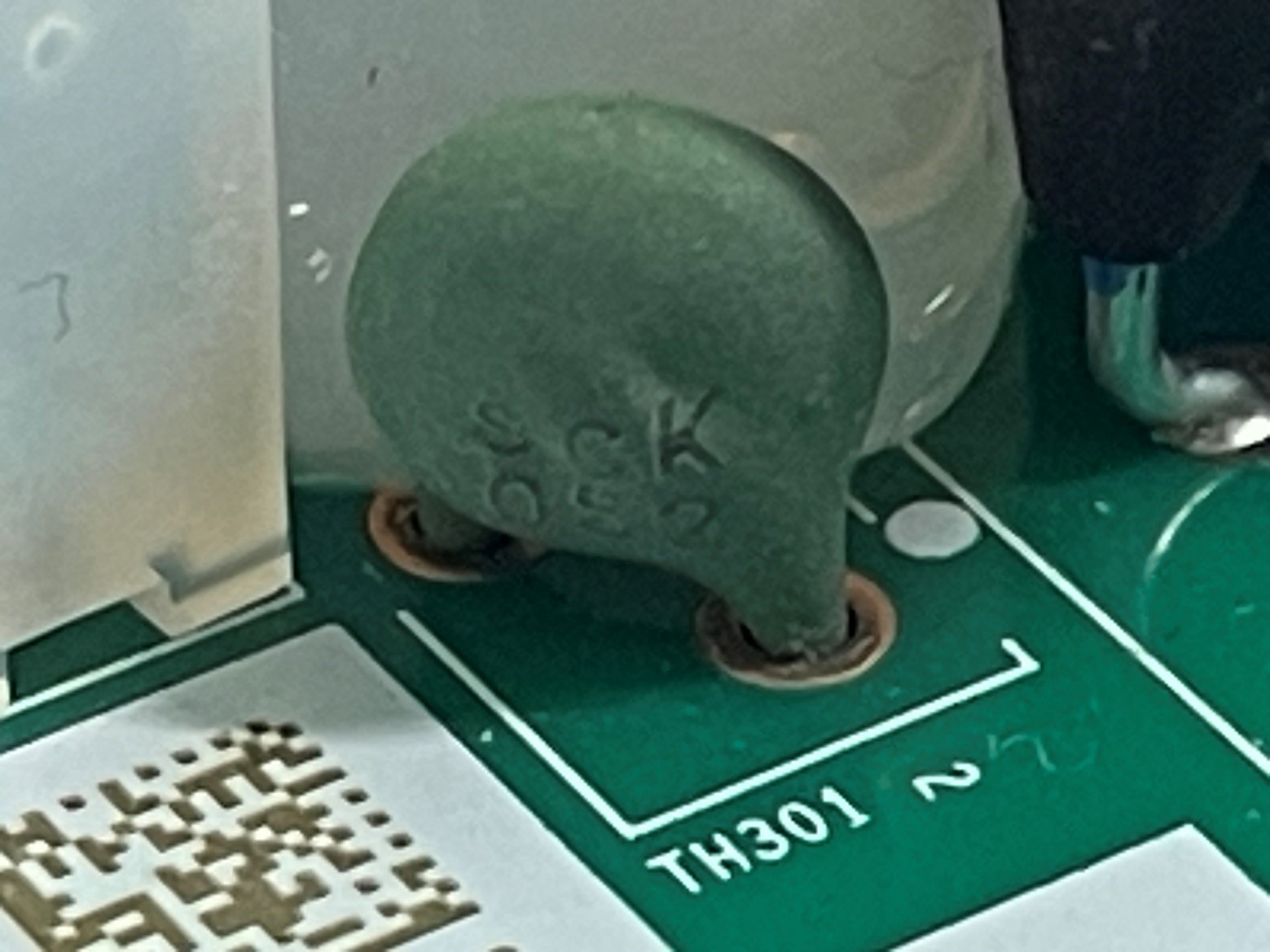
The next component, covered in sleek black heat-shrink tube, is a S14 K300 TVR varistor. This component plays a crucial role in providing Transient Voltage protection. In simpler terms, when an electrical surge surpassing a specific voltage (known as the varistor voltage) occurs, the varistor acts to suppress the excess voltage and safeguard the circuit.
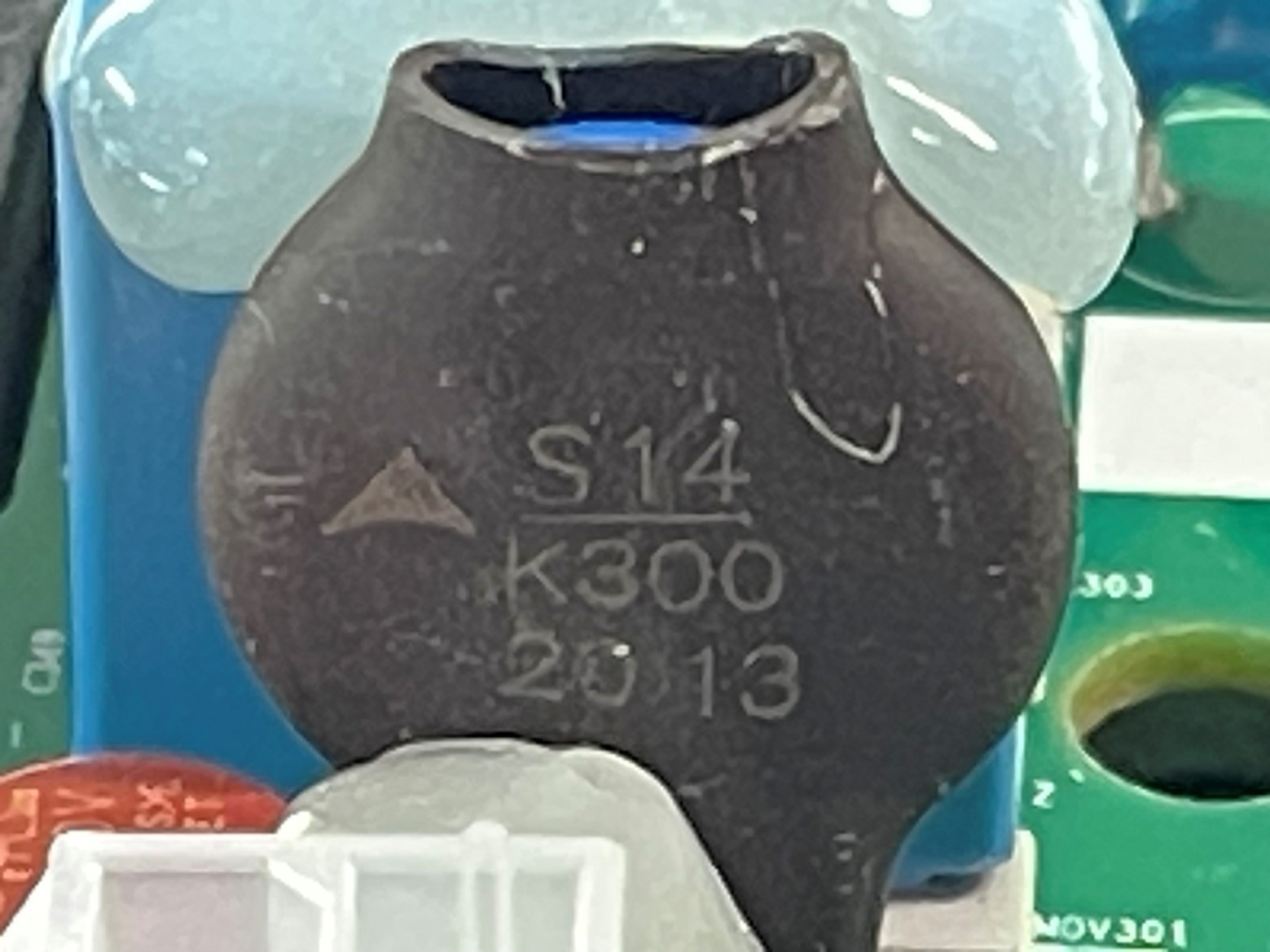
Power - EMI/RFI Filtering
The SYMFONISK is equipped with an AC line filter following the protection circuit to effectively reduce Electromagnetic Interference (EMI) and Radio-Frequency Interference (RFI). This filter is comprised of a Common Mode Inductor accompanied by a pair of X2 capacitors.
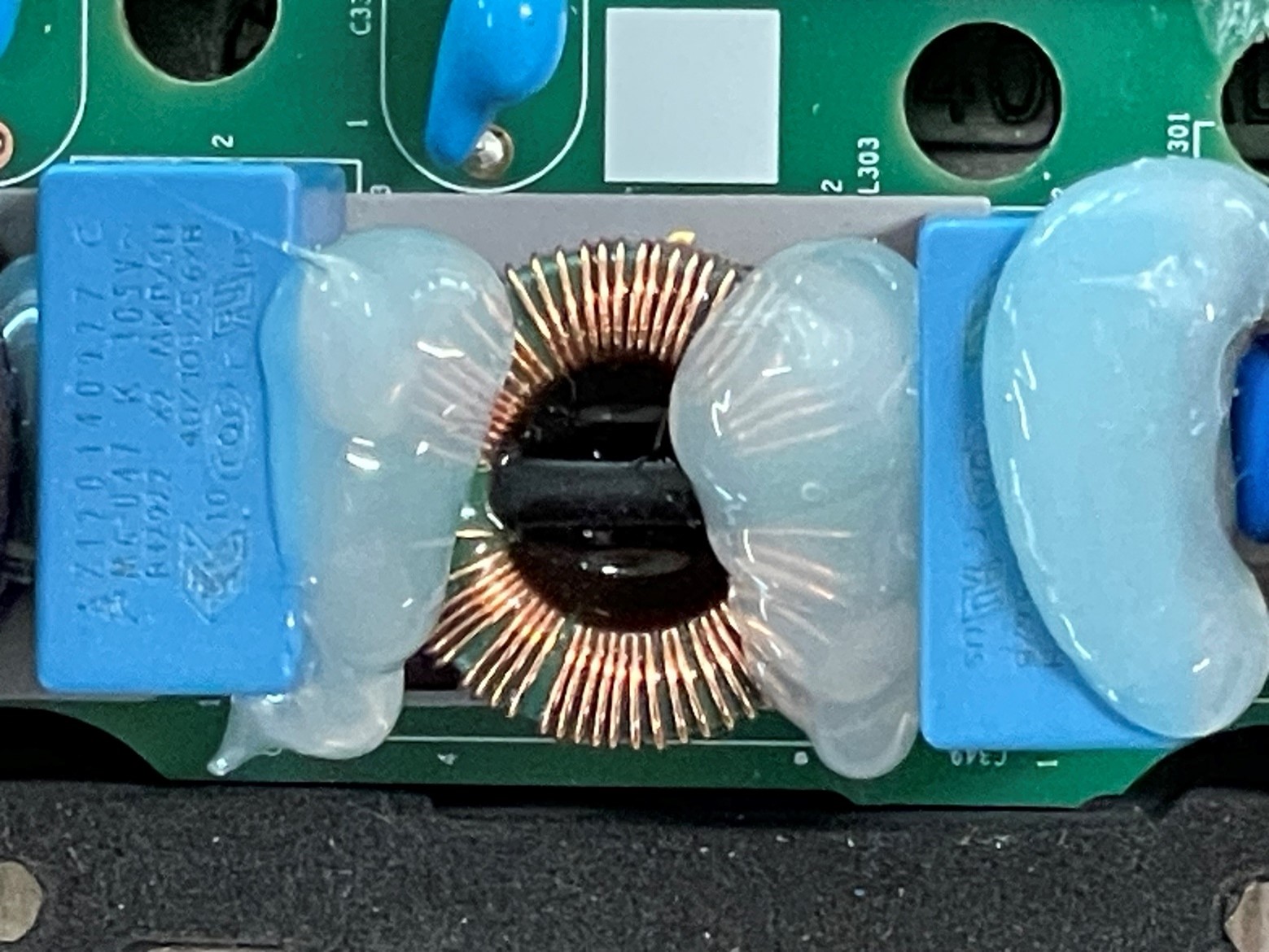
The AC line filter consists of three Y capacitors.

The primary filter in this setup consists of a high-capacity electrolytic capacitor manufactured by Nippon Chemi-Con. This capacitor has a capacitance of 100uF and a voltage rating of 400V.
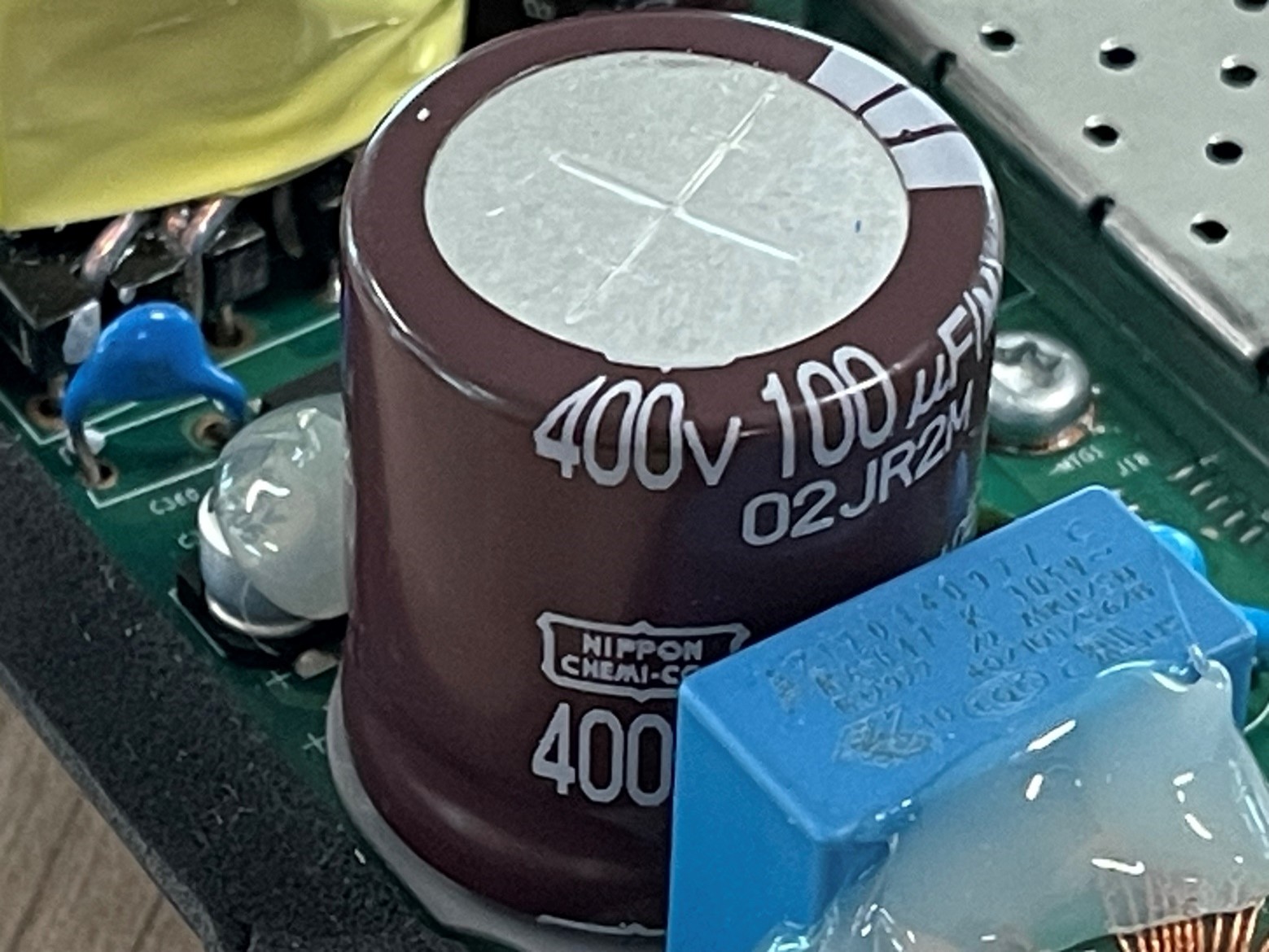
Power - Flyback Transformer
The transformer in the circuit employs an Infineon Cool MOS Power Transistor as its switch.
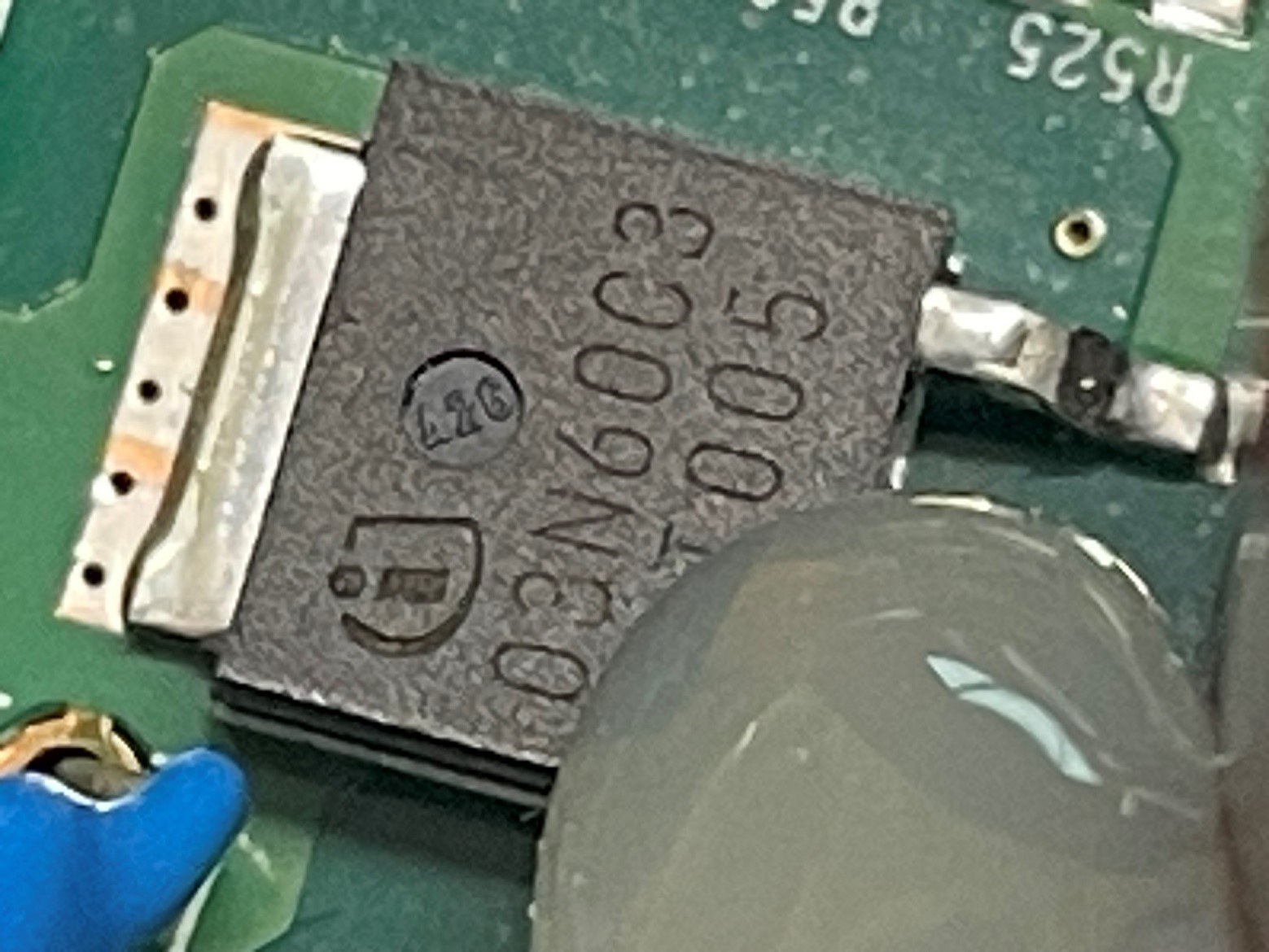
The onboard transformer ensures that the output of the PWM Flyback Controller is isolated from the rest of the Printed Circuit Board (PCB).
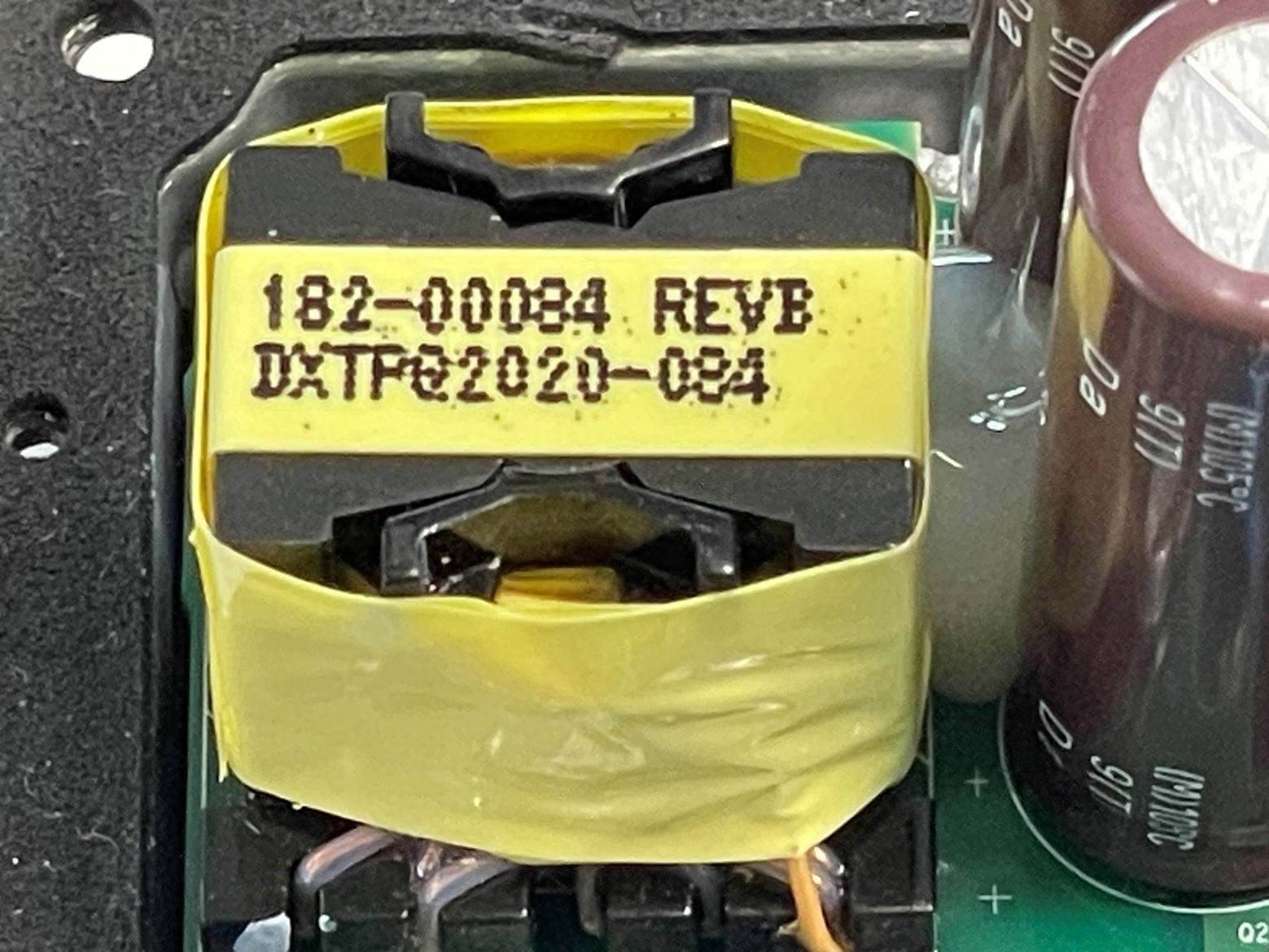
The transformer’s output undergoes filtering using a pair of Nippon Chemi-Con KYB-series Electrolytic Capacitors with a capacitance of 2200uF and a voltage rating of 35V.
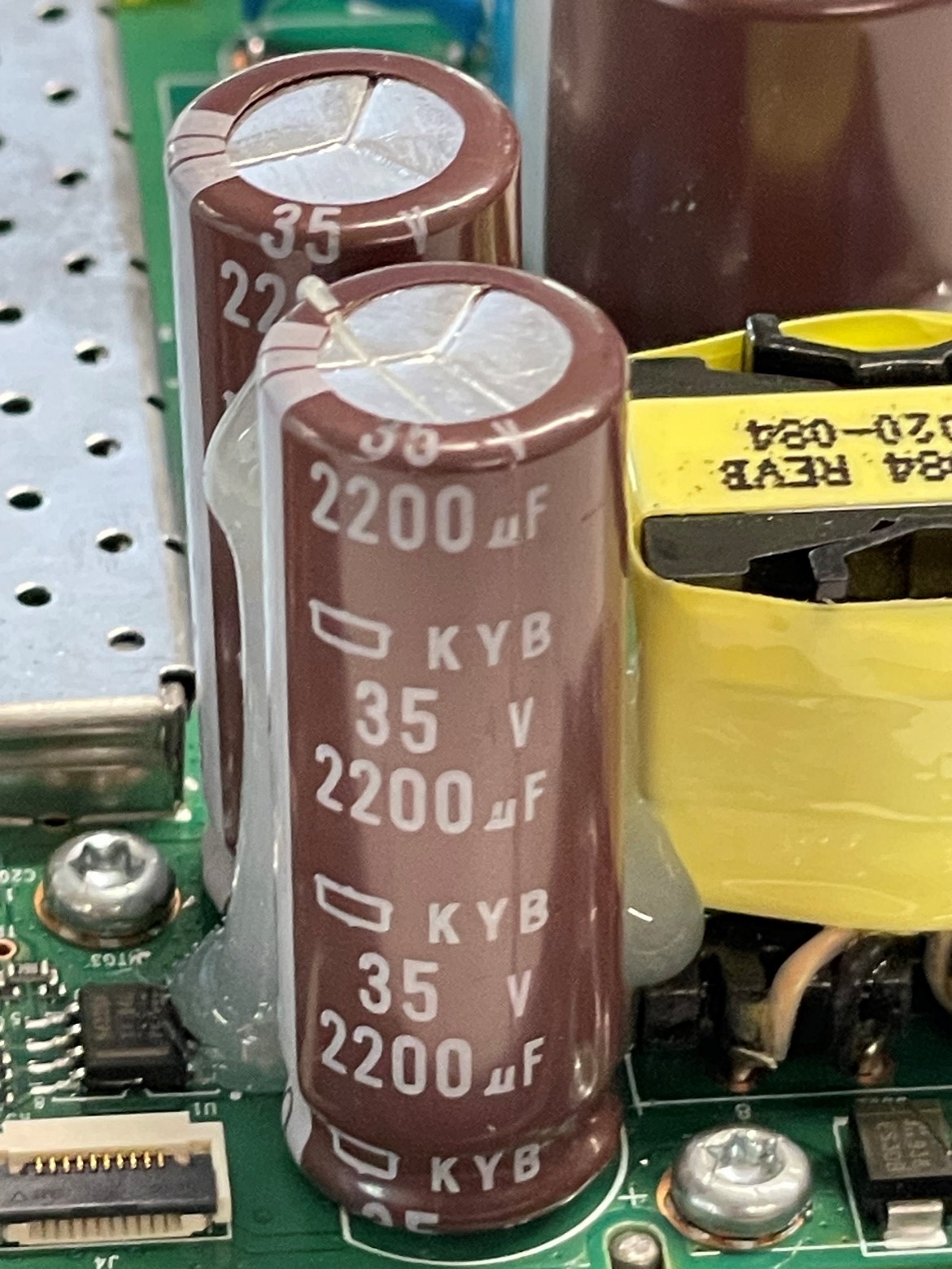
Power - TPS54335A Step-Down (Buck) Converter
Below, you will find a Step-Down Converter manufactured by Texas Instruments (TPS54335A), which is responsible for regulating the voltage supplied to the remaining components of the circuit.
It does this by stepping down the output voltage from the Flyback Converter, and providing a regulated 3.3V voltage rail for the rest of the device.
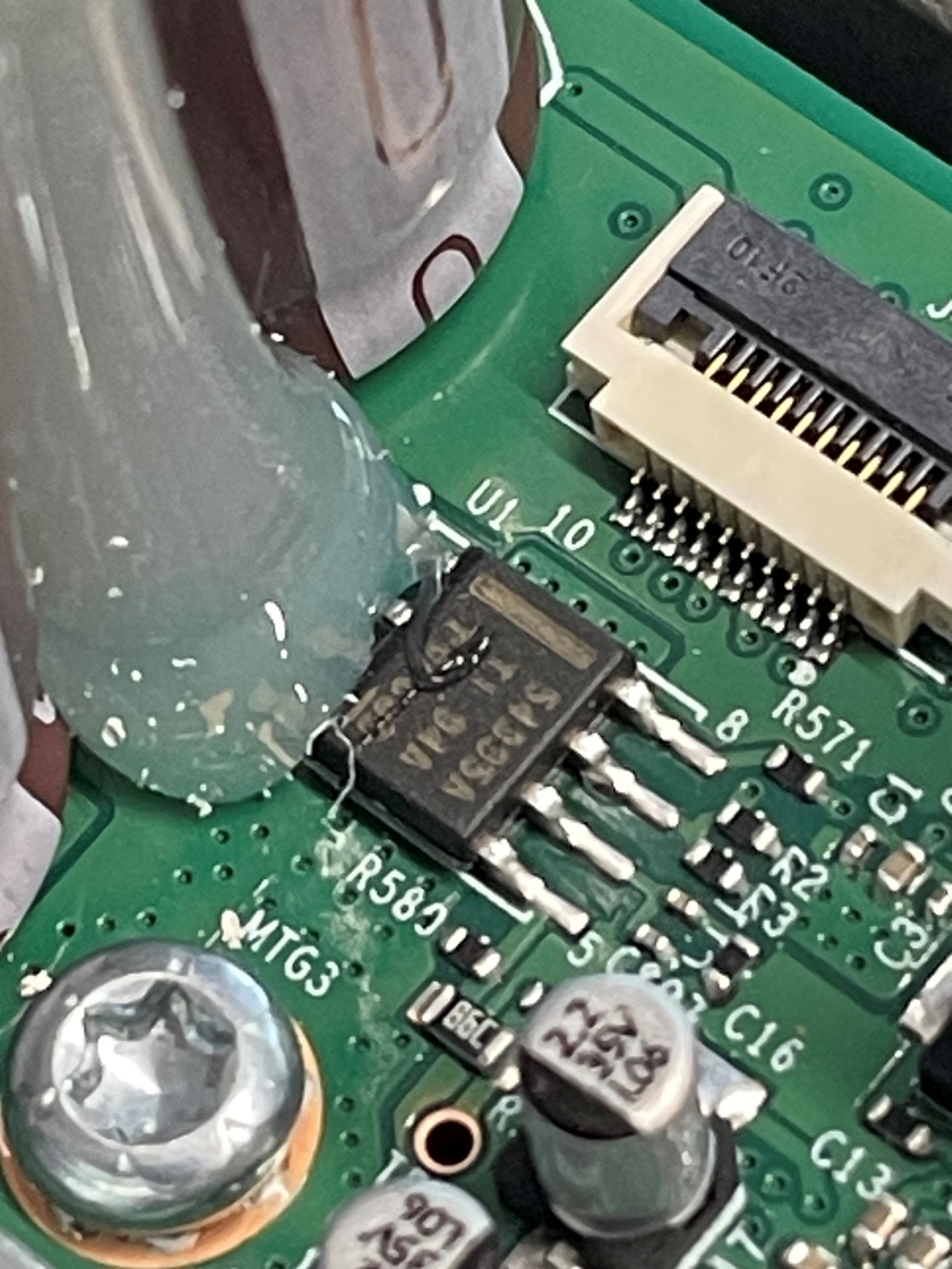
Audio - PCM5101A Audio DAC
The Texas Instruments PCM5101A Audio DAC is utilized for converting digital sources into analog sound output.
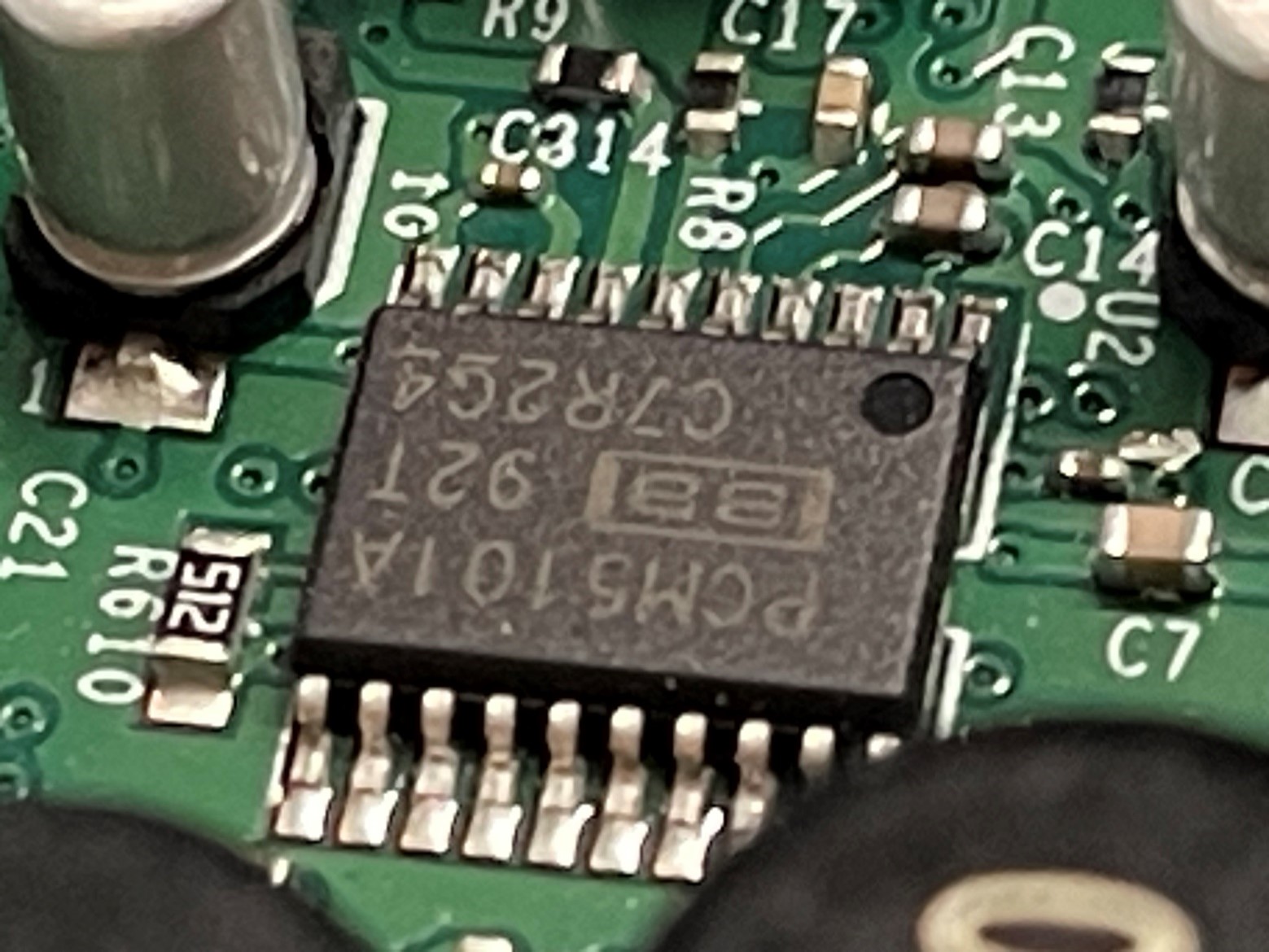
The last notable audio components are a quartet of inductors. These inductors are essential for filtering the output of the digital power amplifier.
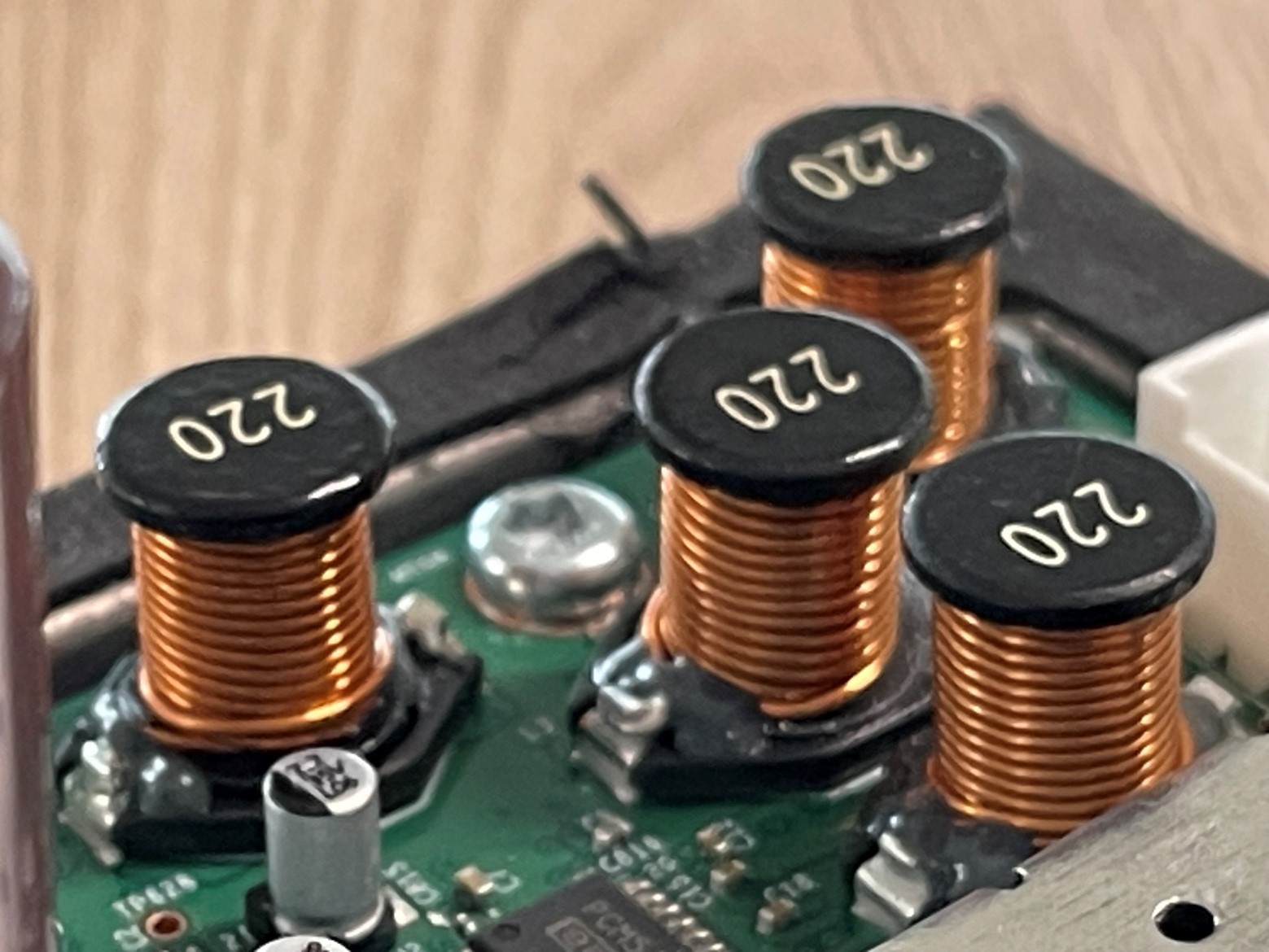
Metal Enclosure (TOP)
Upon opening the Metal Enclosure, the following components can be found:
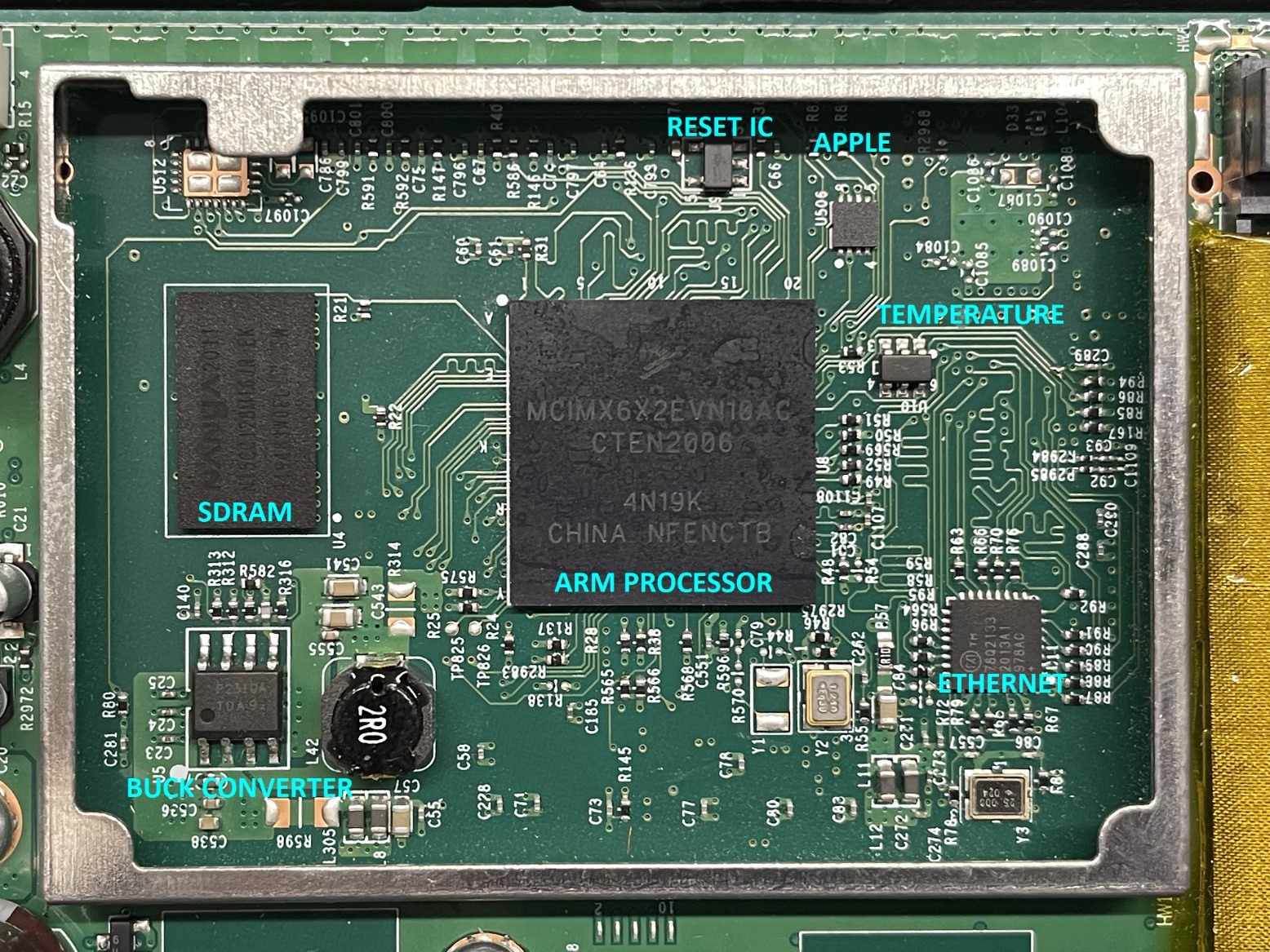
Memory - NT5CC128M16JR-EK 2Gb DDR3 SDRAM
Below is an image of a 2Gb DDR3 SDRAM from Nanya (NT5CC128M16JR-EK). It acts as the volatile memory for the device. It allows for quick read/write access for the embedded operating system (OS) and required applications to be loaded and executed.
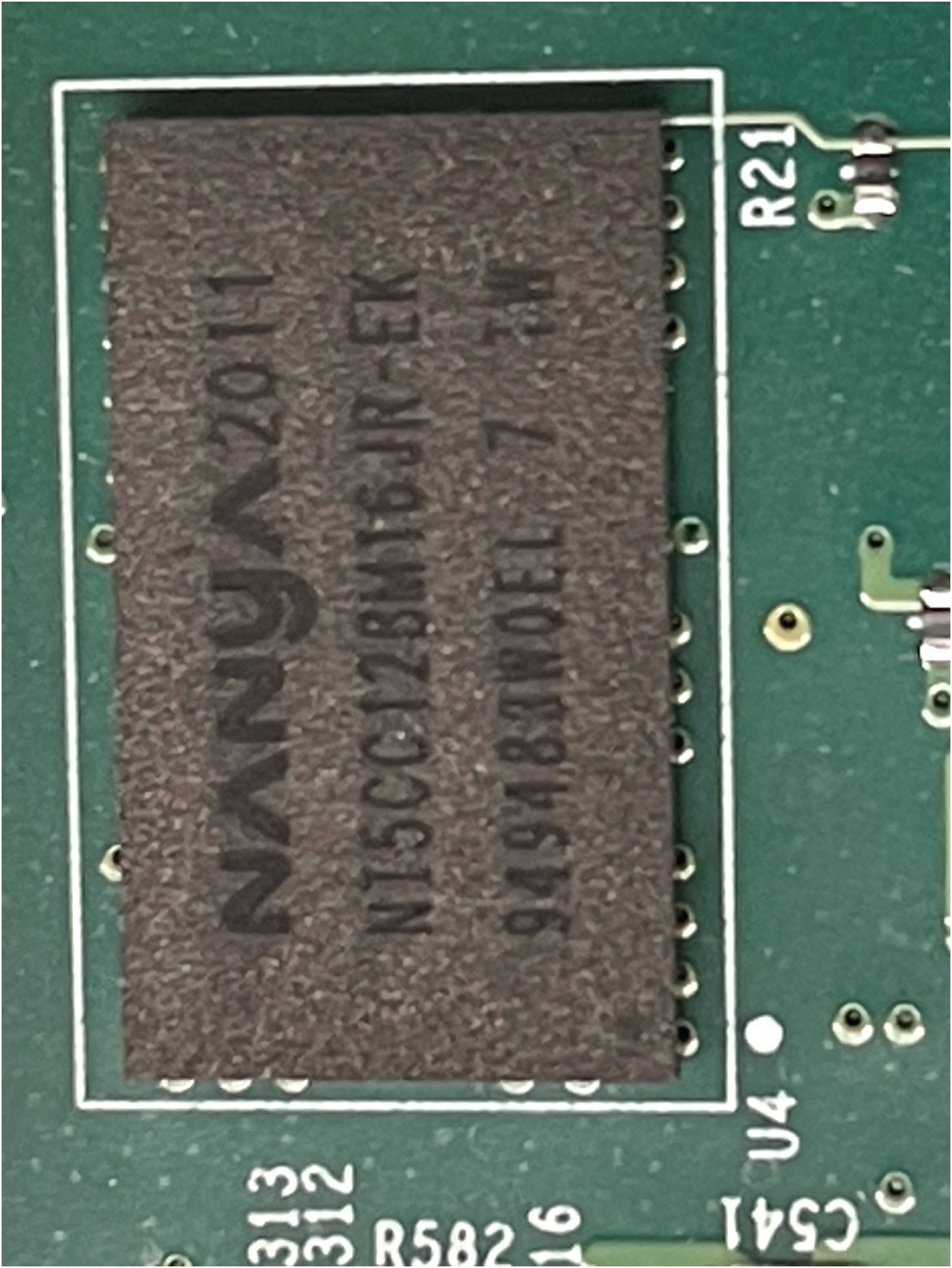
Power - PAM2310 Step-Down (Buck) Converter
The image below depicts a DC-DC Step-Down Converter from DIODES (PAM2310). It is employed to provide a dedicate voltage rail for the ARM Processor. It takes the regulated 3.3V and steps it down to a regulated 1.4V for the ARM Processor’s operation.
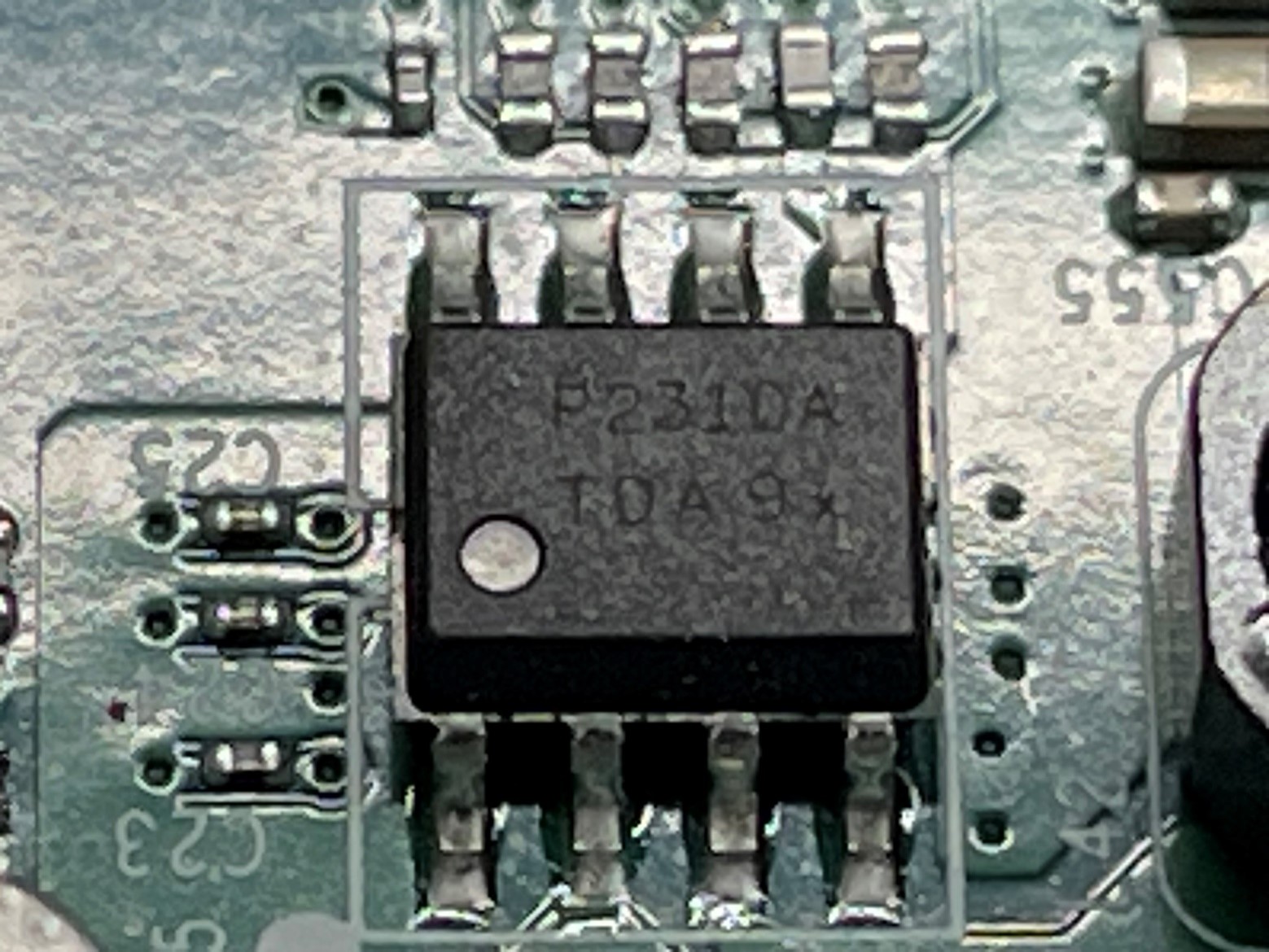
Power - NCP303 Voltage Supervisor Reset IC
The image displayed below showcases a Voltage Supervisor Reset IC from ON Semiconductor (NCP303). It is used to help the processor recover from low voltage events or power disruptions.
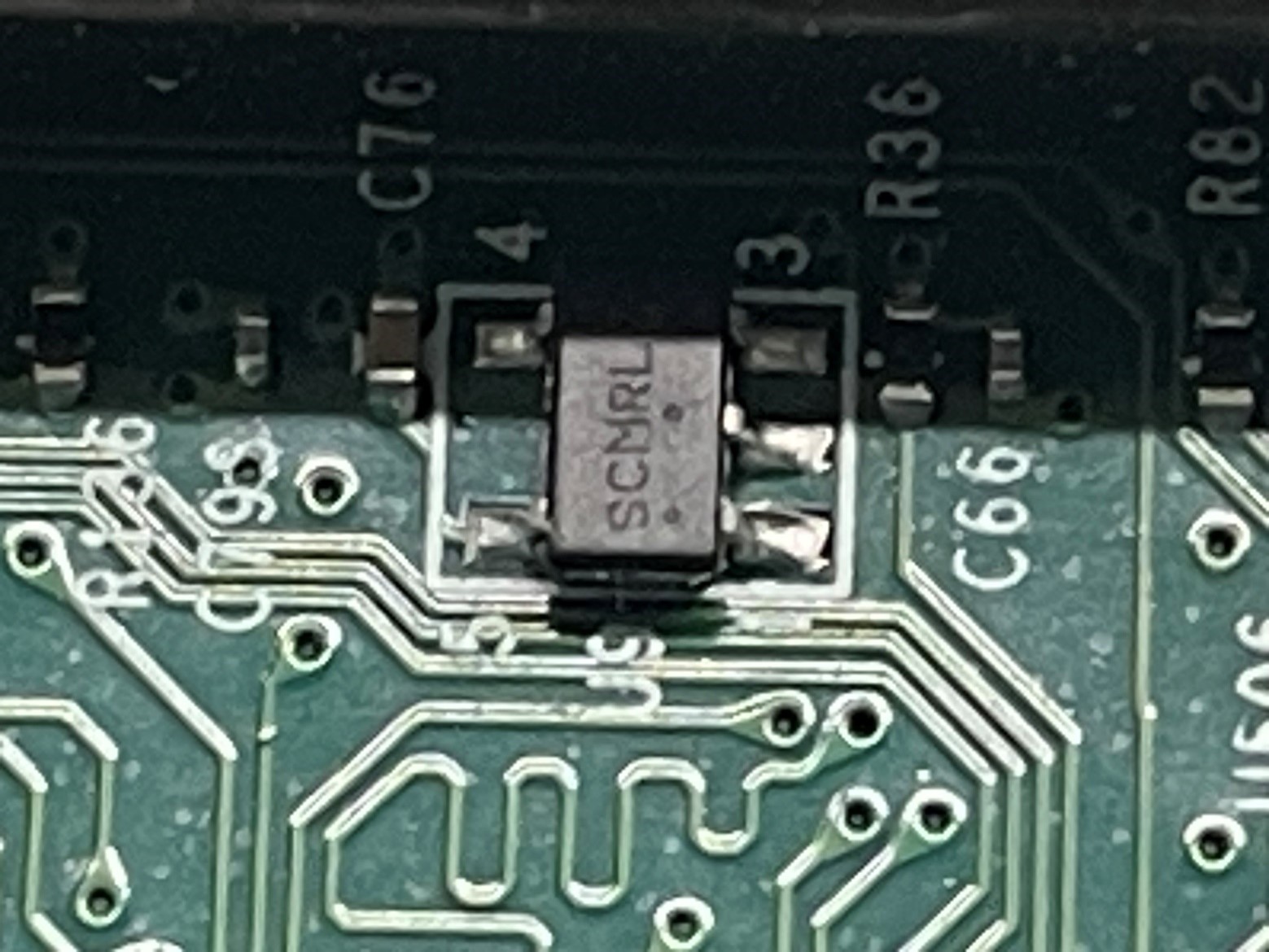
Processor - MCIMX6X2EVN10AC ARM Cortex A9 + M4
The image below is the MCIMX6X2EVN10AC, an NXP ARM Dual-Core Cortex A9 + M4 processor. This processor powers the SYMFONISK and runs the device’s kernel operating system, supporting various functions and features.
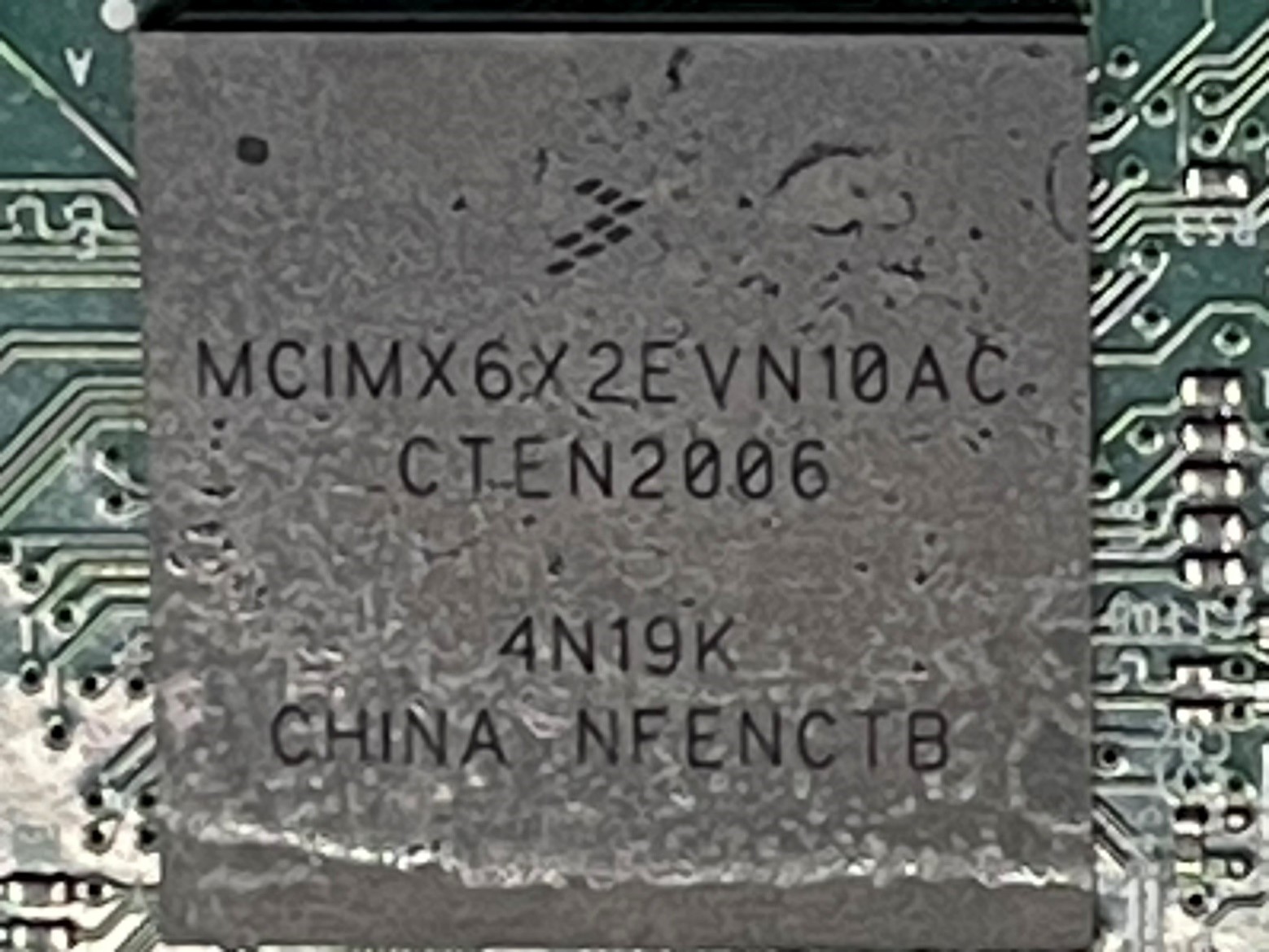
This quartz crystal acts as the oscillator for the Dual-Core processor.
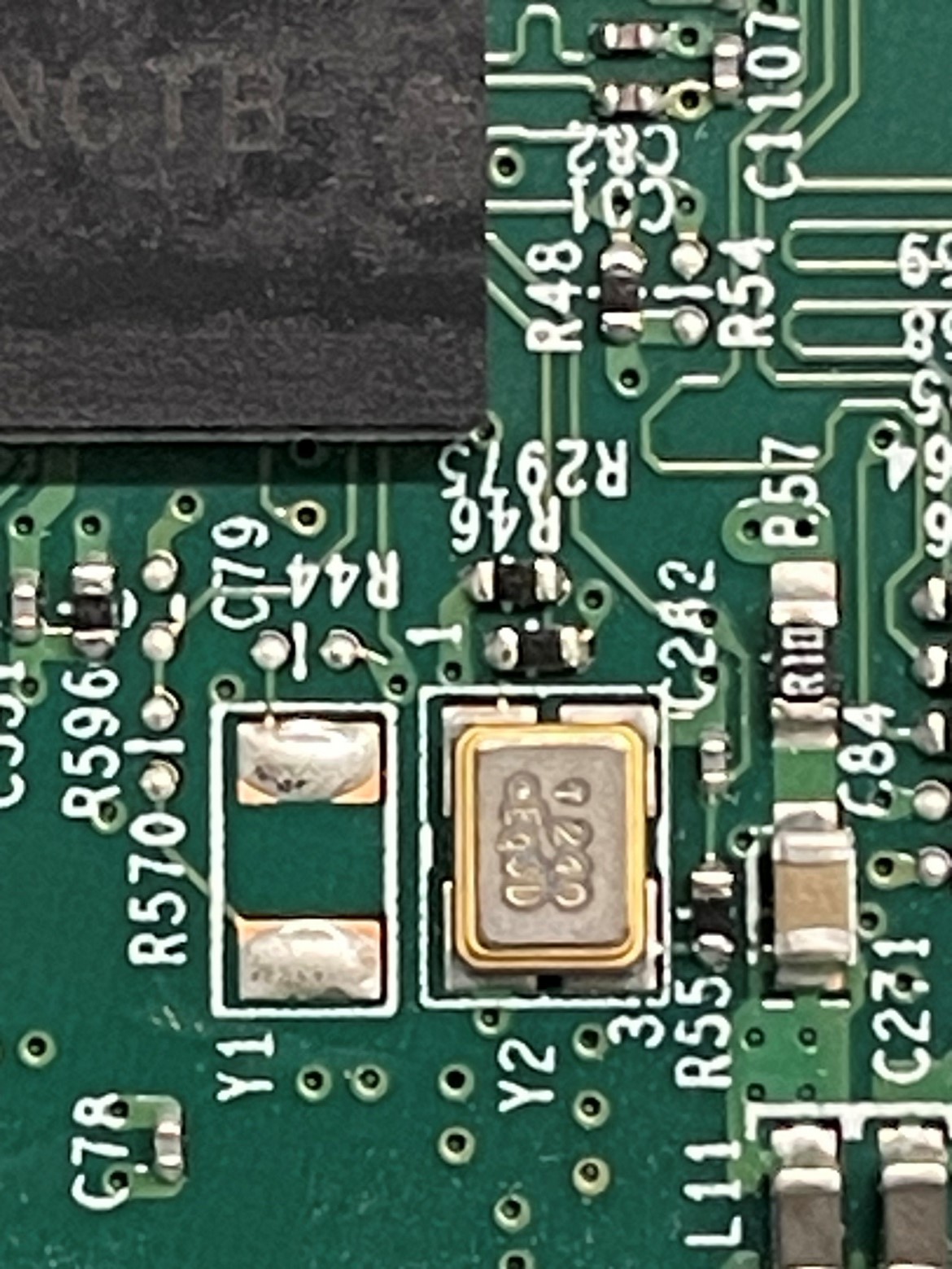
Apple - Accessory Certification IC (3959)
Below is the Authentication Coprocessor. A proprietary component by Apple, identified as APN337S3959 / MFI337S3959. This purpose-built coprocessor specializes in managing authentication processes and facilitating seamless connections with Apple devices.
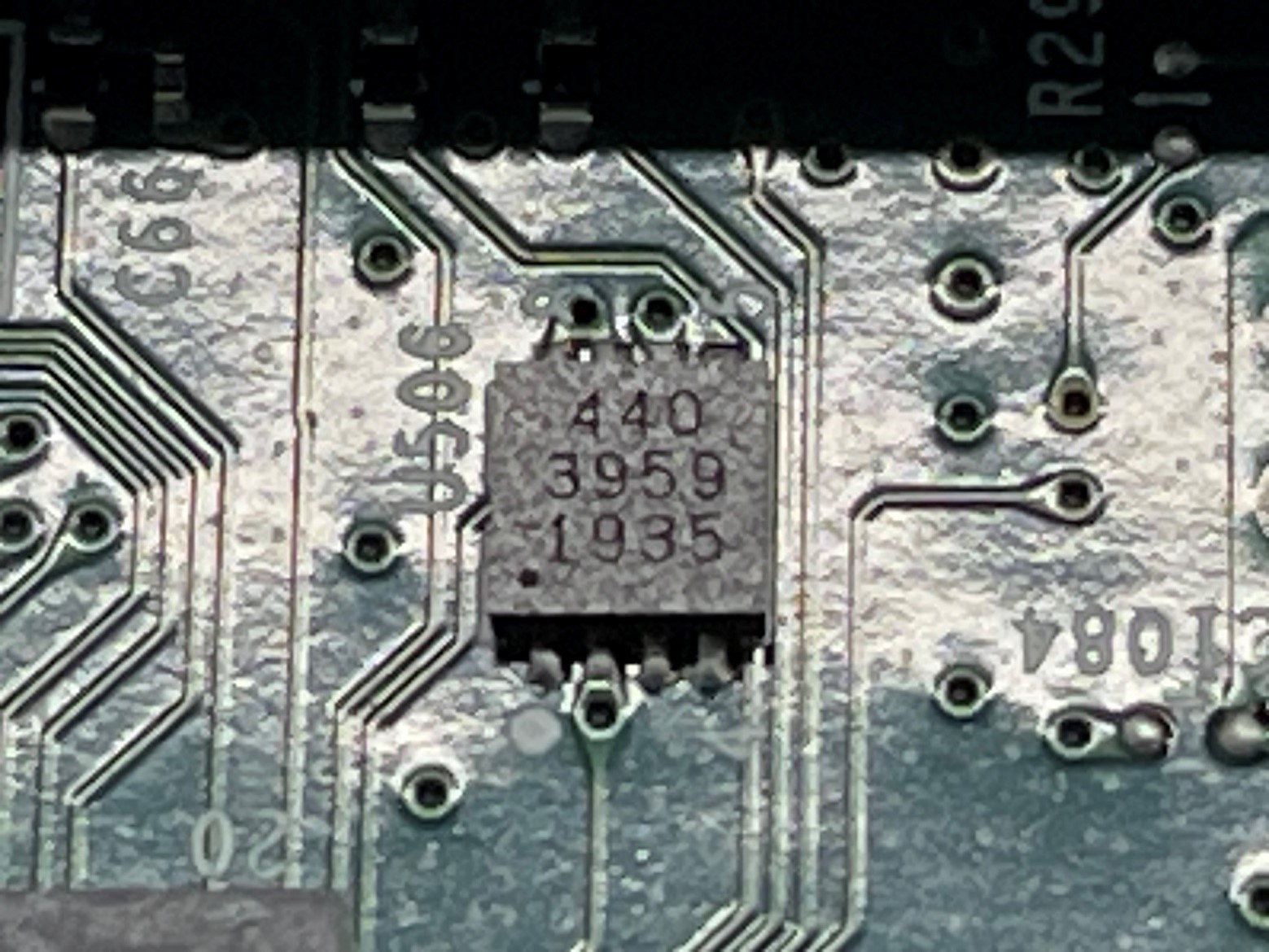
Temperature - TMP100 Digital Temperature Sensor
The internal temperature of the SYMFONISK is monitored using an I2C digital temperature sensor from Texas Instruments (TMP100) is used to monitor the internal temperature of the SYMFONISK. It offers a typical accuracy of +/- 1°C, over a temperature range of −55°C to 125°C.
With its placement next to the ARM Processor, the temperature sensor monitors one of the hottest component of the SYMFONISK, to ensure that the smart speaker operates in optimal conditions.
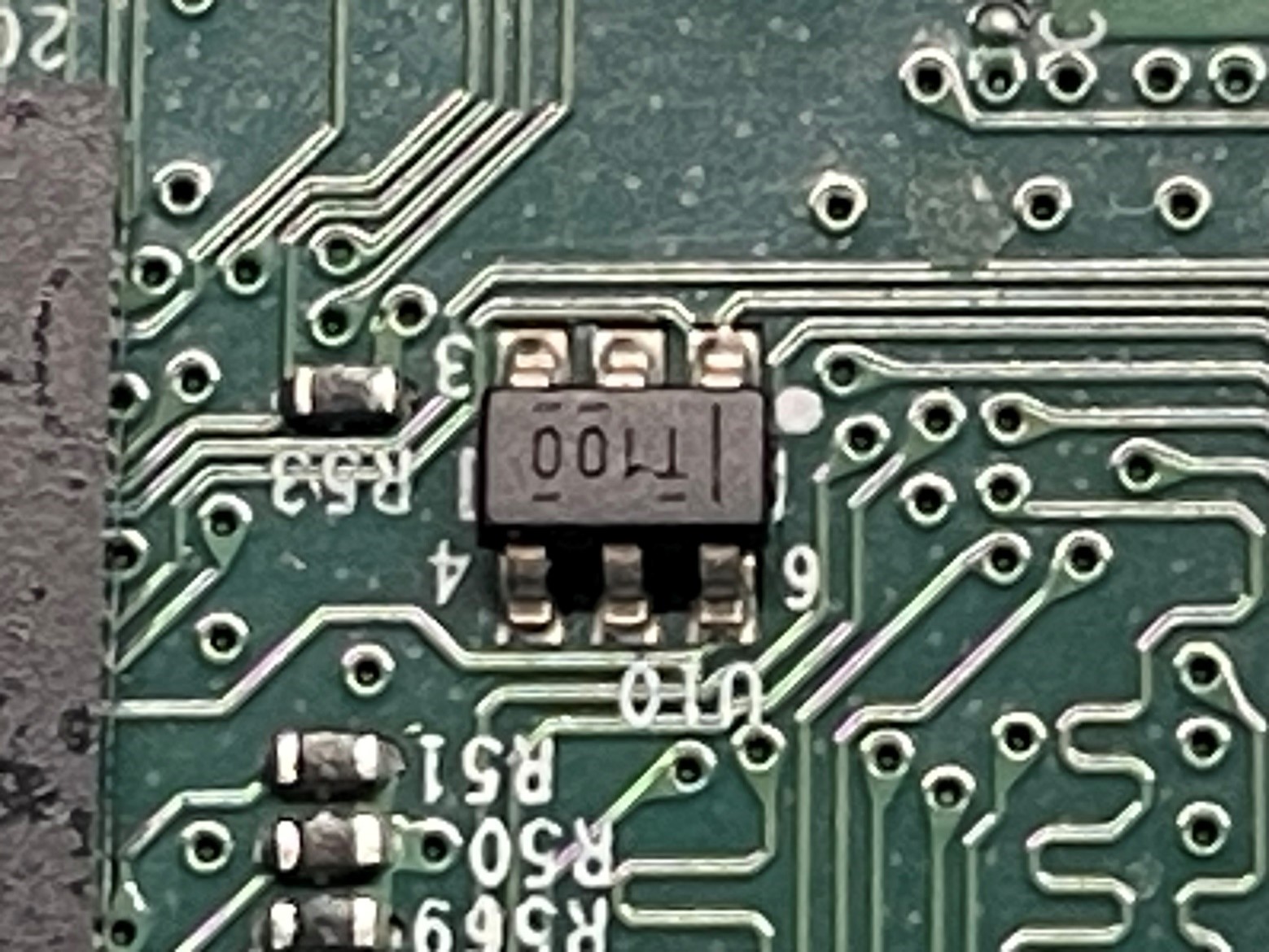
Ethernet - 78Q2133 10/100BASE Transceiver
Next we find a 10BASE-T/100BASE-TX Fast Ethernet transceiver from MAXIM (78Q2133). If the SYMFONISK is not connected via WiFi, a physical LAN connection can be achieved via this IC.
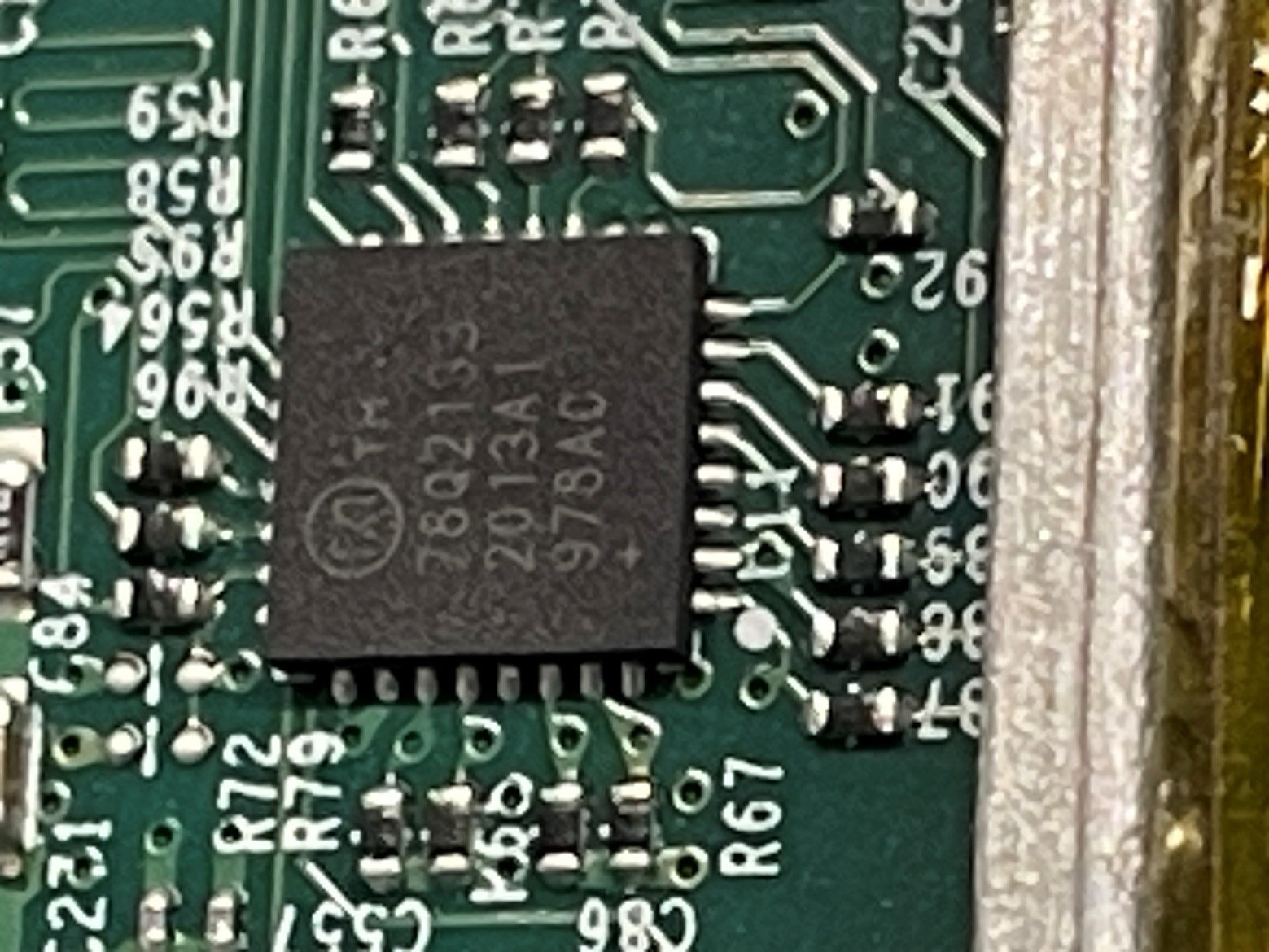
As shown below, a 25MHz crystal is used as the clock reference for the 10BASE-T/100BASE-TX Fast Ethernet transceiver.
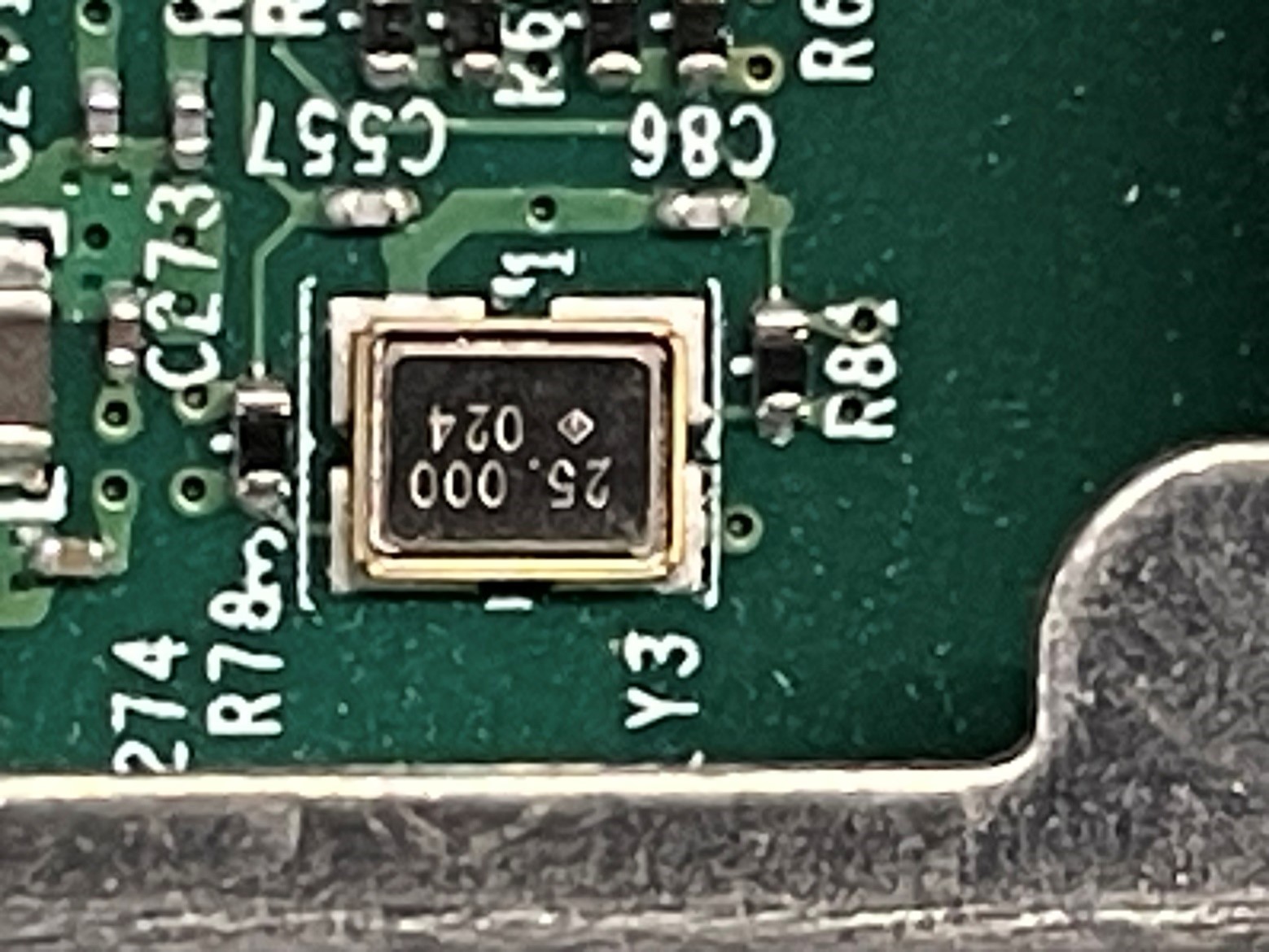
Ethernet - H1601AE Network Isolation Transformer
Upon removing the rear casing of the SYMFONISK, we can easily locate the Main Circuit Board. Adjacent to the RJ45 LAN connector on the board, there is the Mentech MNC H1601AE Network Isolation Transformer. This vital component serves two key functions: isolating the LAN line ground connection to eliminate ground loops, and suppressing high frequency noise that may be present on the LAN source.
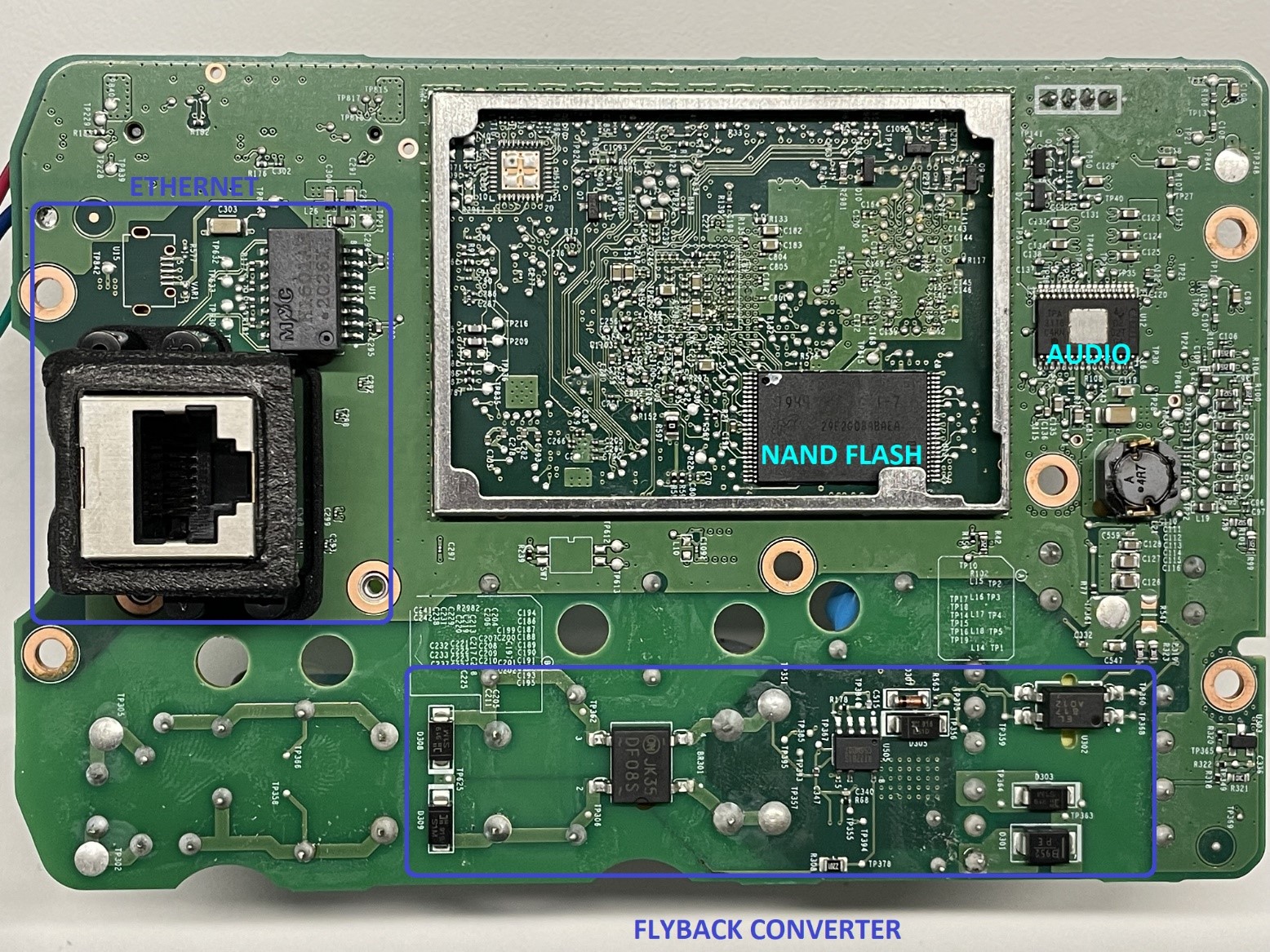
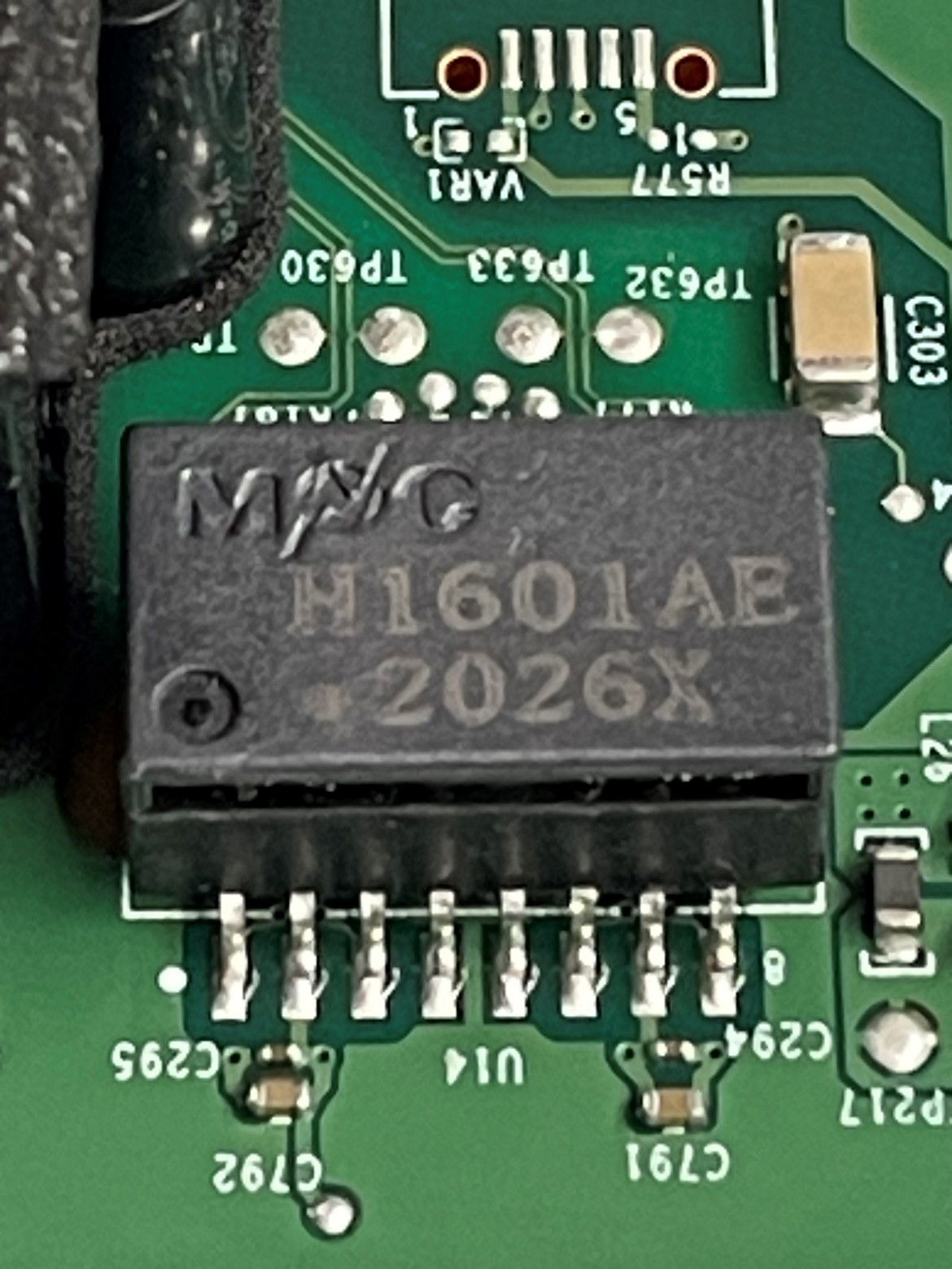
Memory - MT29F2G08ABAEAWP-ITE 2Gb NAND Flash
Located within the lower shielded enclosure on this section of the printed circuit board is a Micron MT29F2G08ABAEAWP-ITE 2Gb x8, x16 NAND Flash Memory. This non-volatile memory acts as the offline storage of the embedded OS, applications and their configurations.
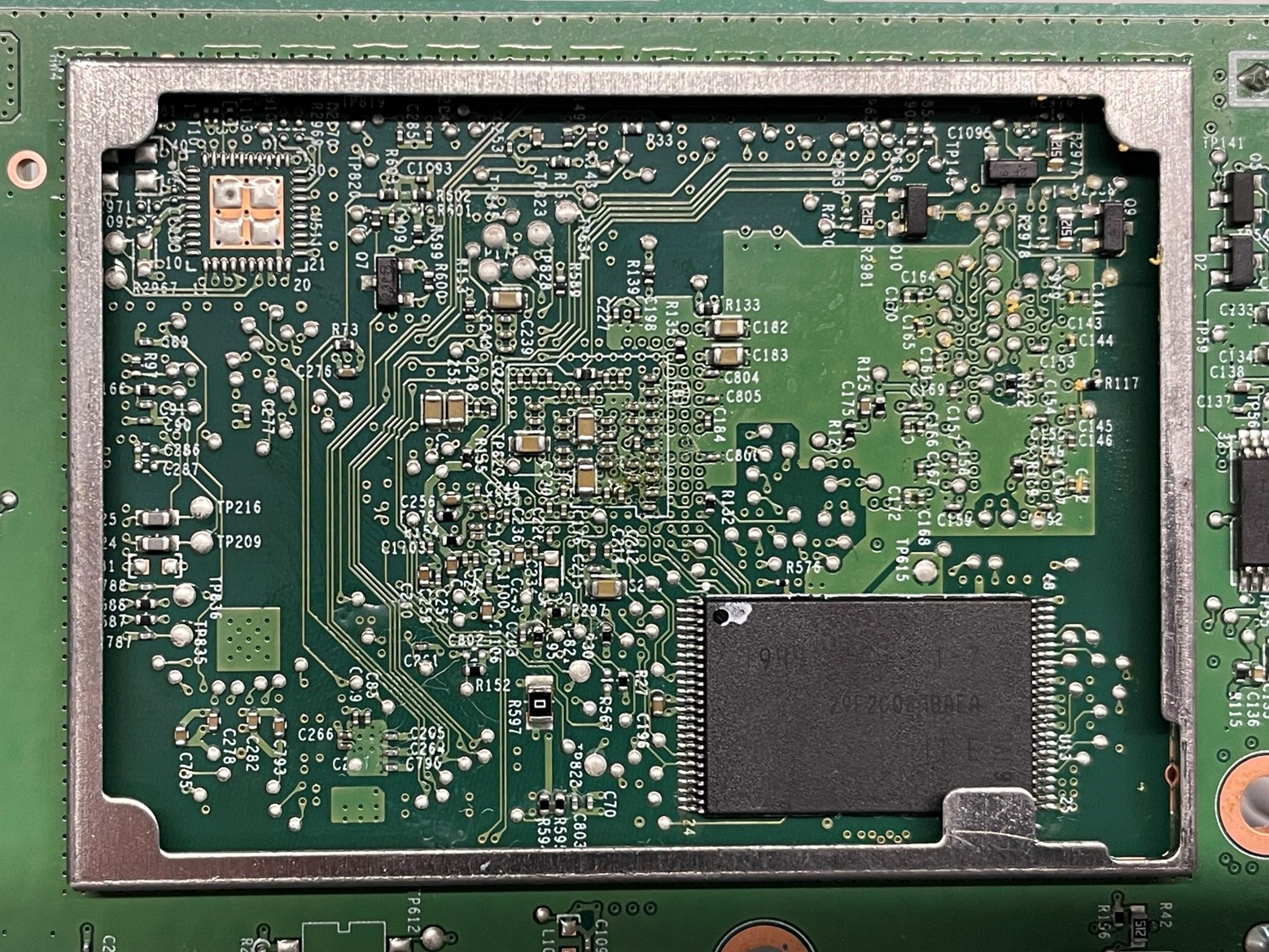
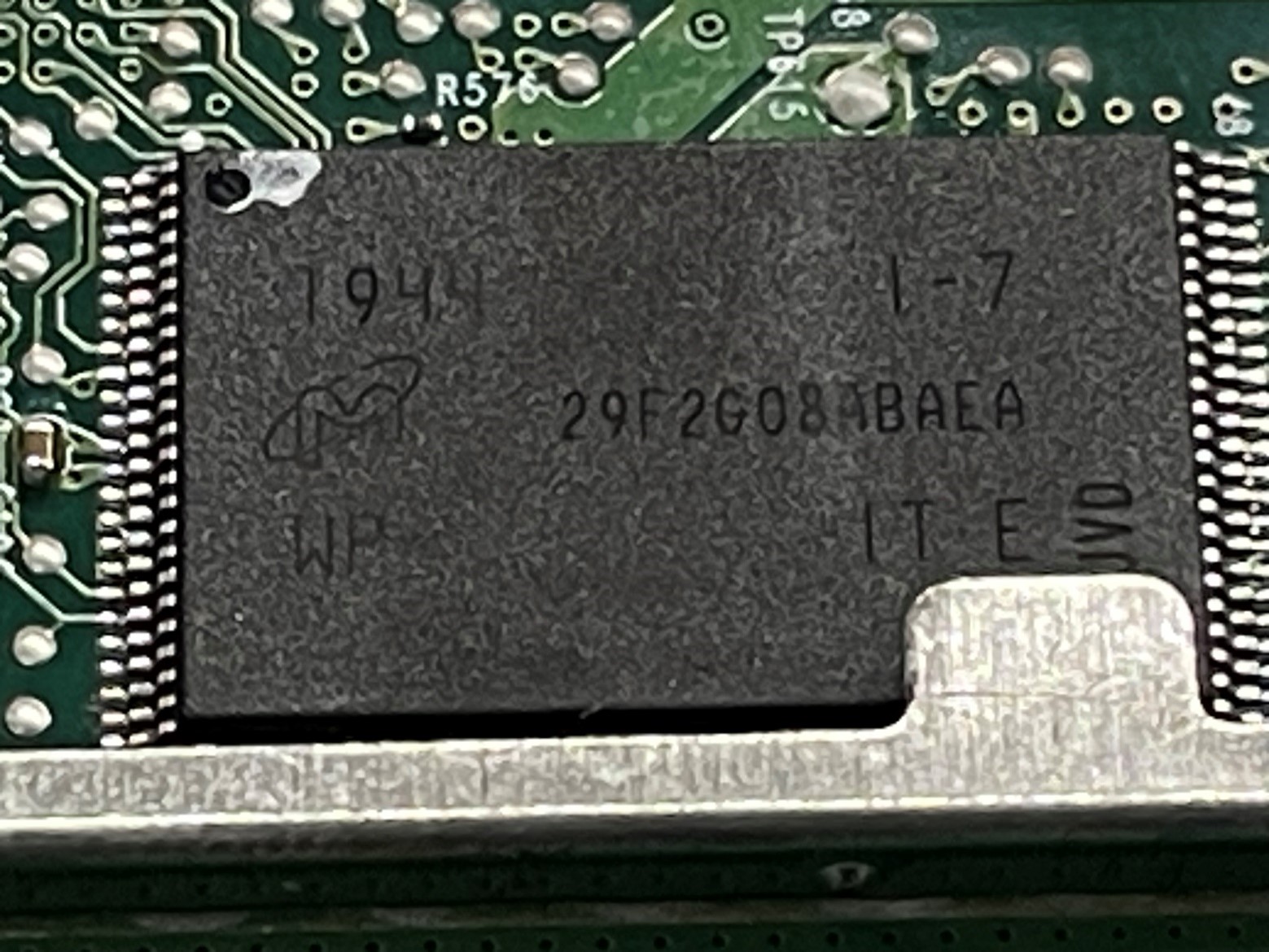
Audio - TPA3116D2 Class D Audio Amplifier
Next to the Metal Enclosure, we find TPA3116D2 50-W Filter-Free Class-D Stereo Amplifier Family from Texas Instruments. This component amplifies the analogue audio signals from the DAC, and drives the speakers for produce the signature high quality sounds the SYMFONISK is known for.
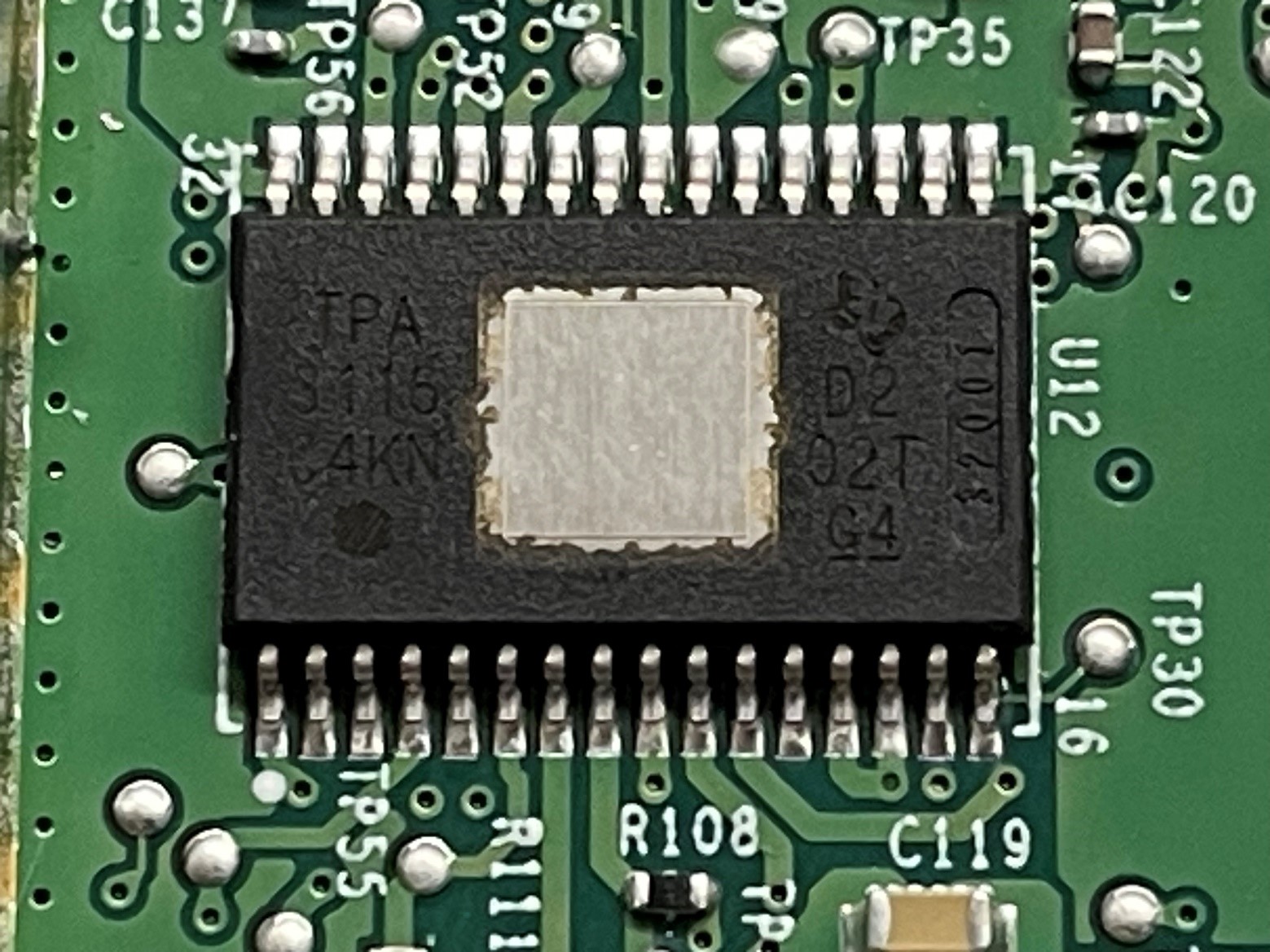
Power - Flyback Diodes
On the other side of the Common Mode Inductor, we have a pair of Flyback Diodes, which play a crucial role in managing high voltage transients. These transients occur when the supply current experiences sudden changes while passing through the inductor—typically during the power-on or power-off cycles of the SYMFONISK device. The Flyback Diodes efficiently divert these voltage spikes to protect the circuit from potential damage.
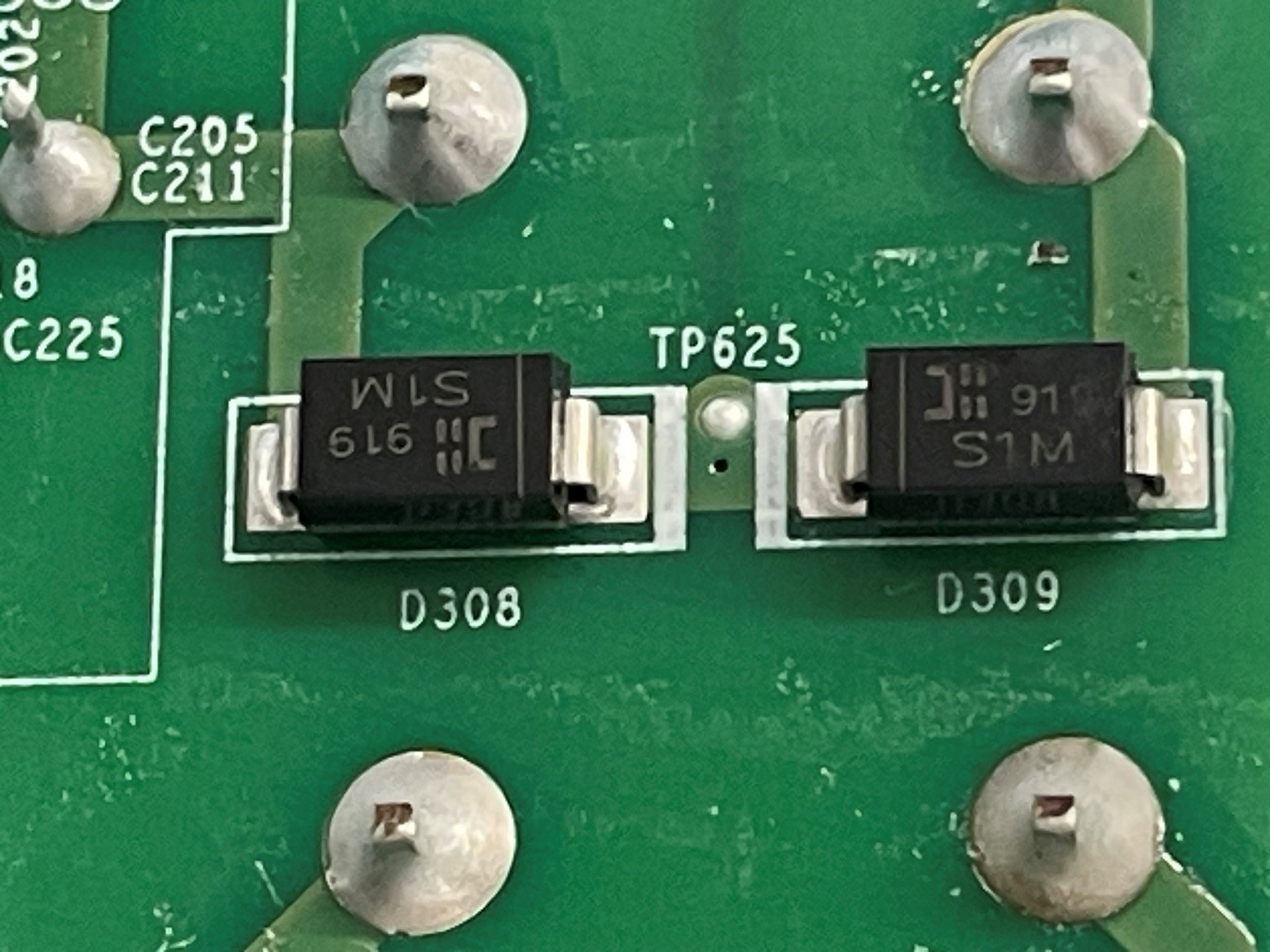
Power - DF08S Rectifier Bridge
Next we find a DF08S Rectifier Bridge from ON Semiconductor. Its function is to convert the Alternating Current (AC) from the input Power Source into a Direct Current (DC).
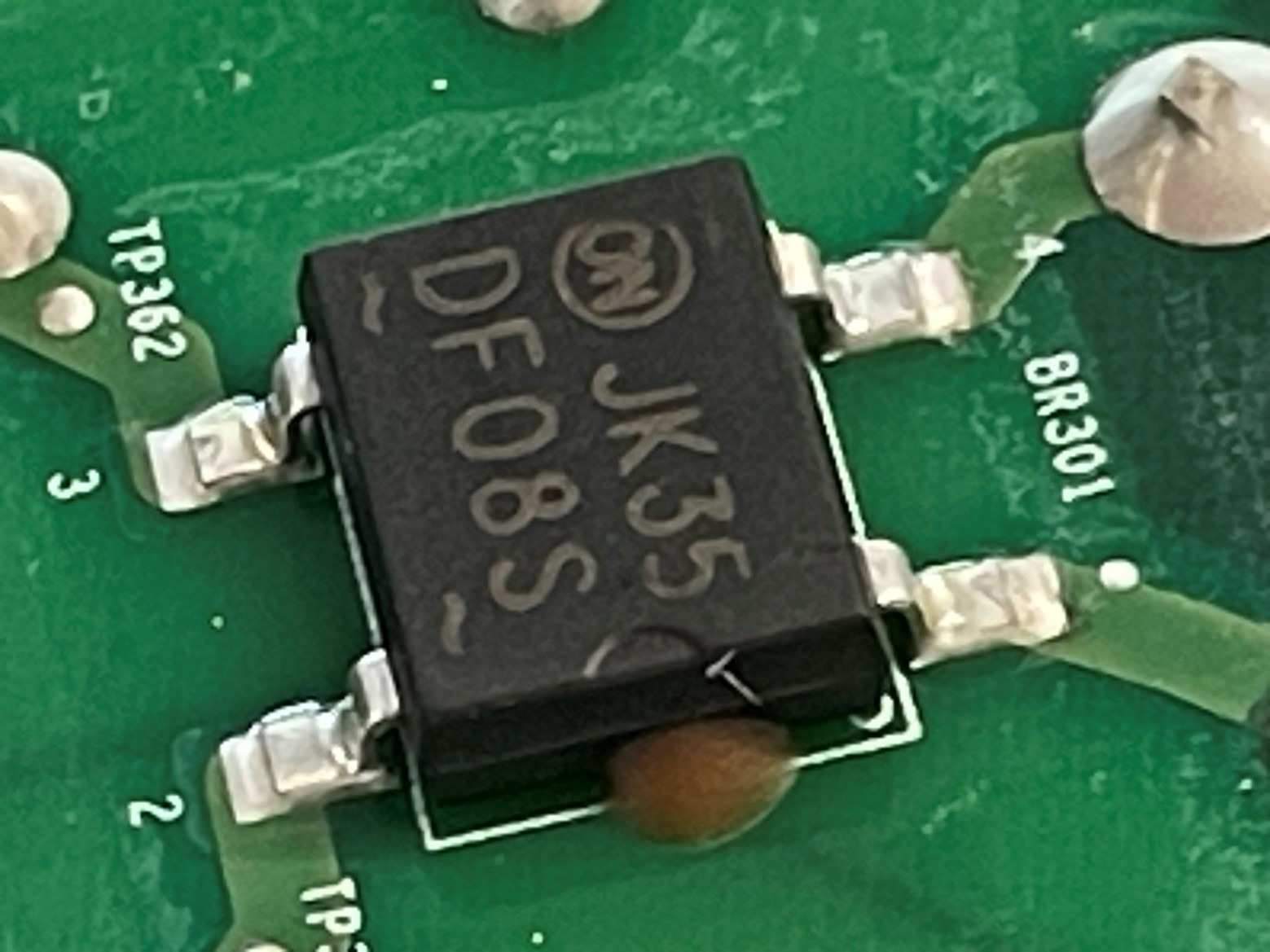
Power - RT7781 PWM Flyback Controller
A PWM Flyback Controller circuit, utilising the Richtek RT7781, converts the AC rectified power to a desired DC voltage level for the components on the board, such as the step-down (buck) converters.
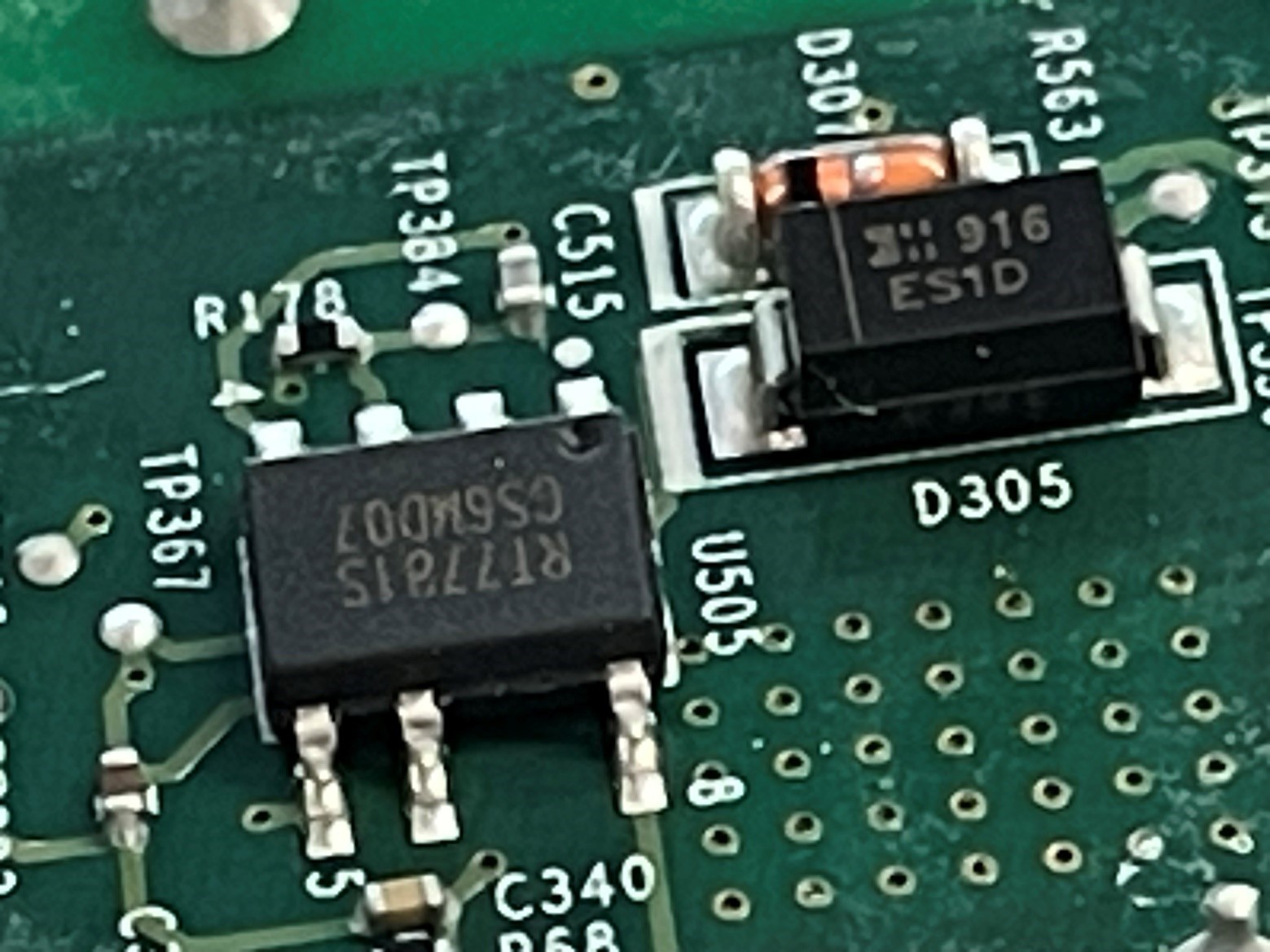
Power - EL817 Photocoupler
A photocoupler from Everlight (EL817) is used to provide feedback to the PWM Flyback Controller circuit.
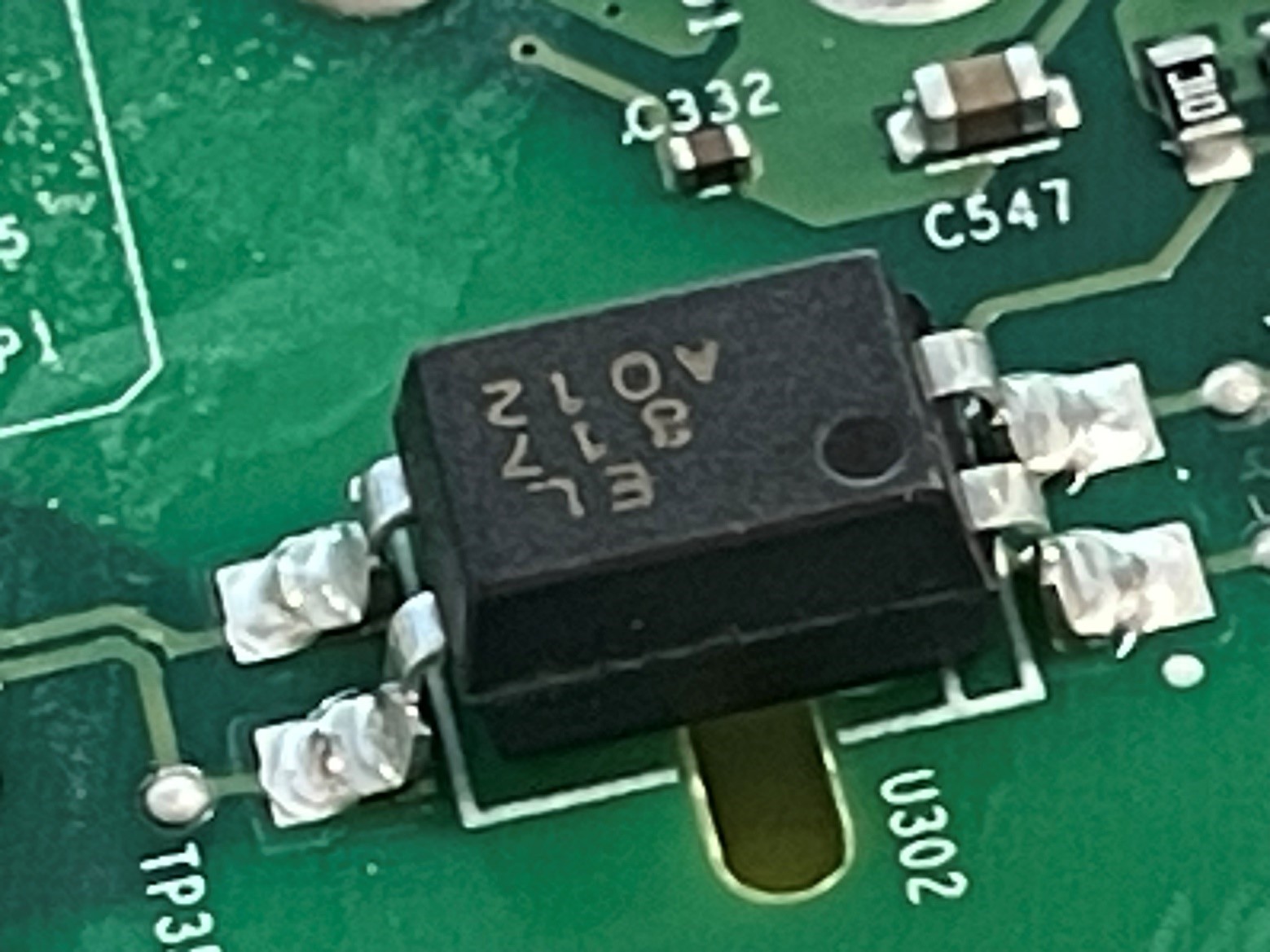
Power - Flyback Diodes
These two components serve as flyback diodes. They are positioned at the output of the PWM Flyback Controller, just before the transformer inputs. Flyback diodes are crucial for managing voltage spikes and ensuring smoother operation.
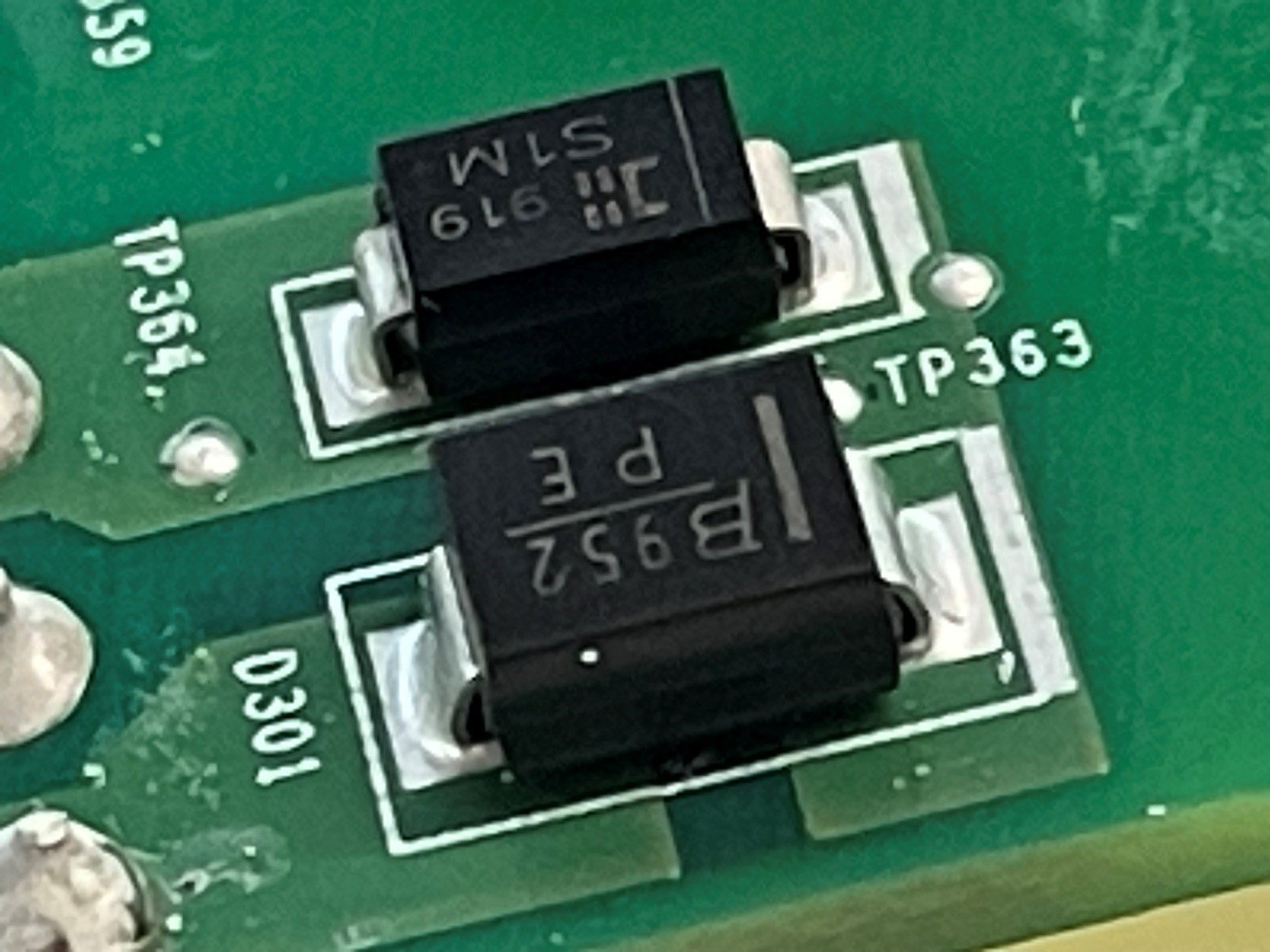
Unpopulated Connectors
The Main Circuit Board features a Micro USB Connector located at U15 on its bottom side. This provision allows for easy connectivity and data transfer.
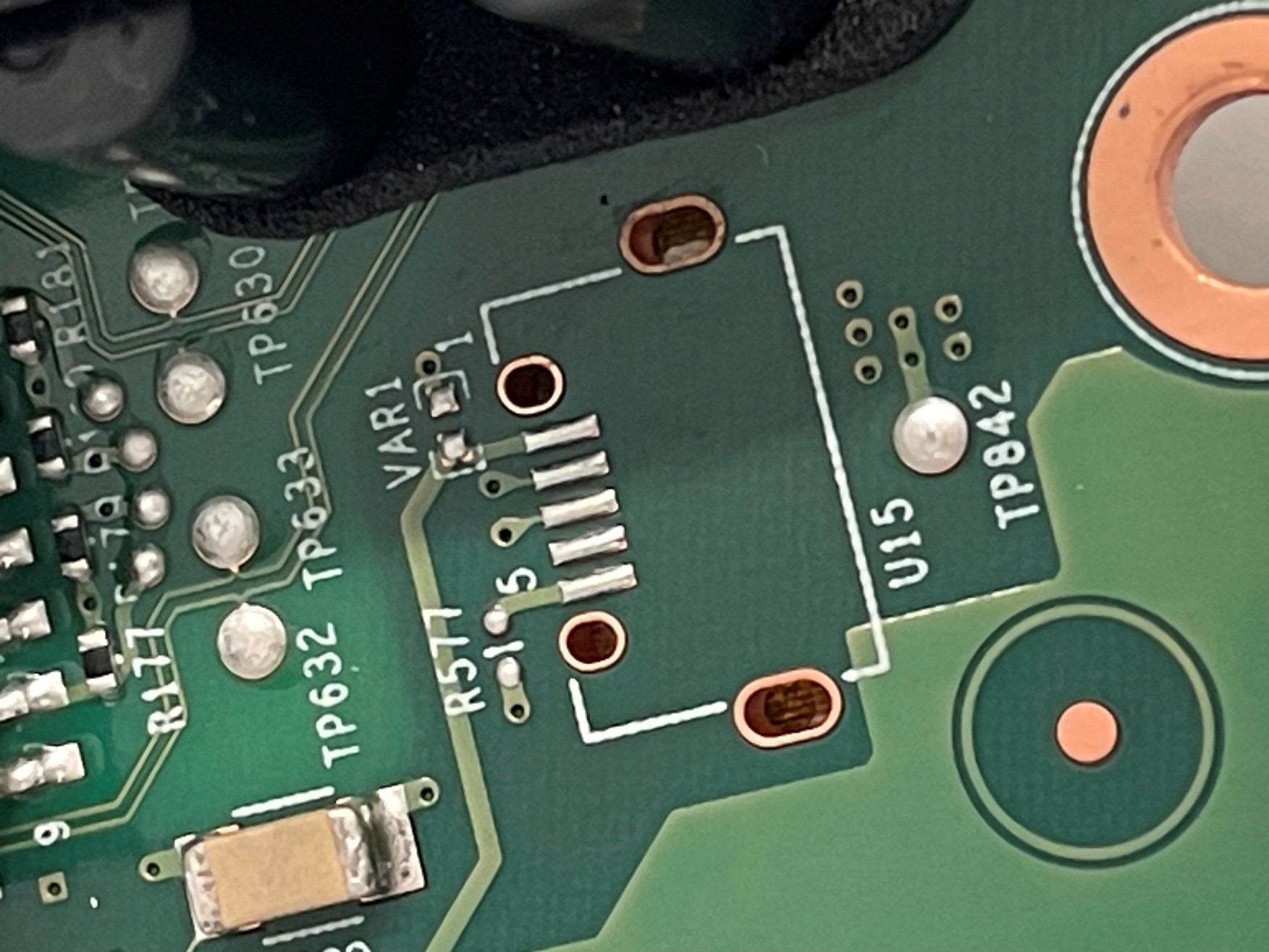
An additional 4-pin ribbon connector, located at J6, serves as a provision for SPI/UART. These signals can be utilized for troubleshooting or reverse engineering purposes, allowing for greater flexibility and ease of access.
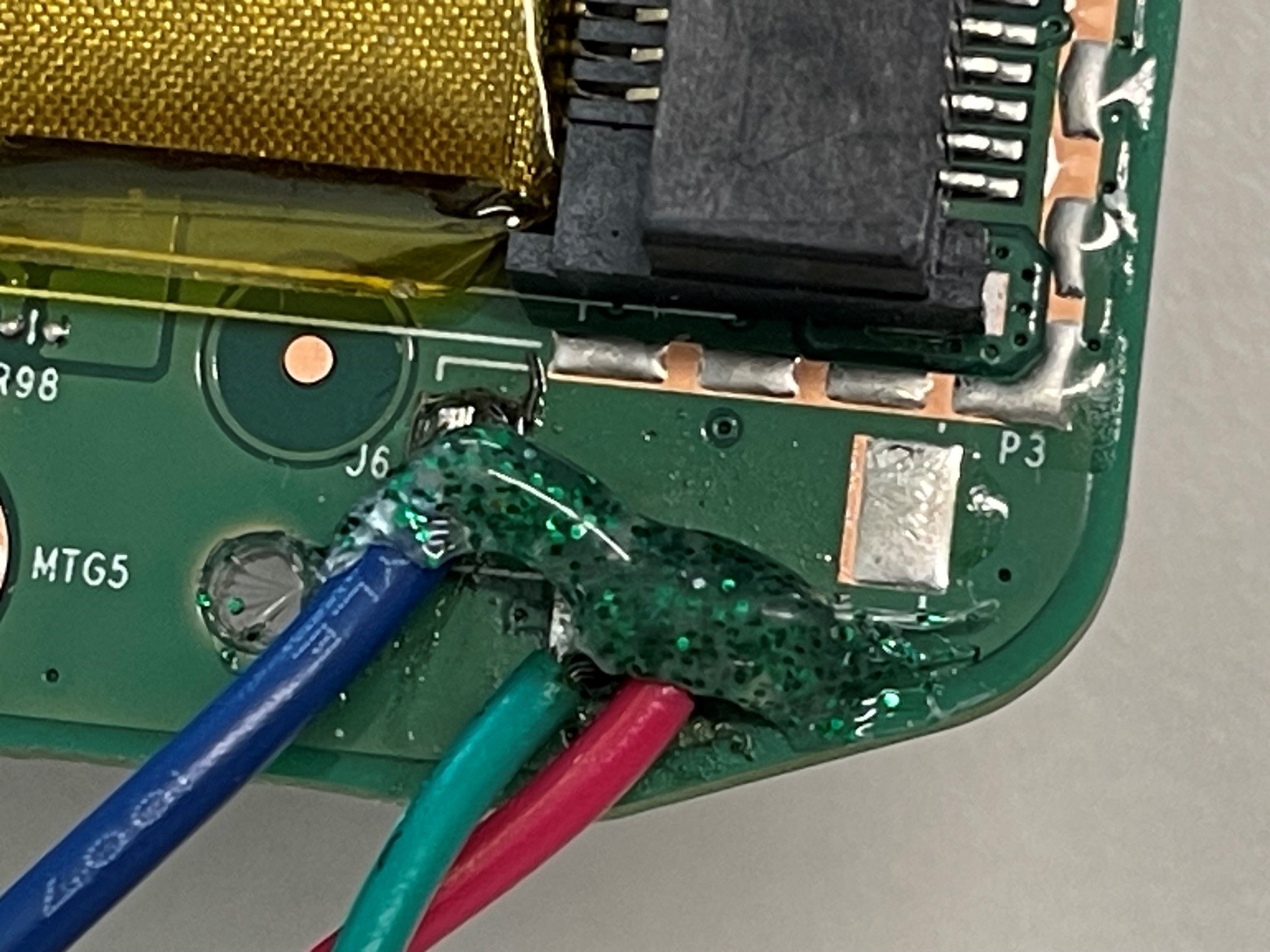
Unpopulated Integrated Circuits (ICs)
This board contains two unmounted IC footprints. The first one, U511, is a 40-pin QFN IC situated in the metal enclosure on the lower side of the board. The second one, U512, is a 24-pin QFN IC located in the metal enclosure on the upper side of the board.
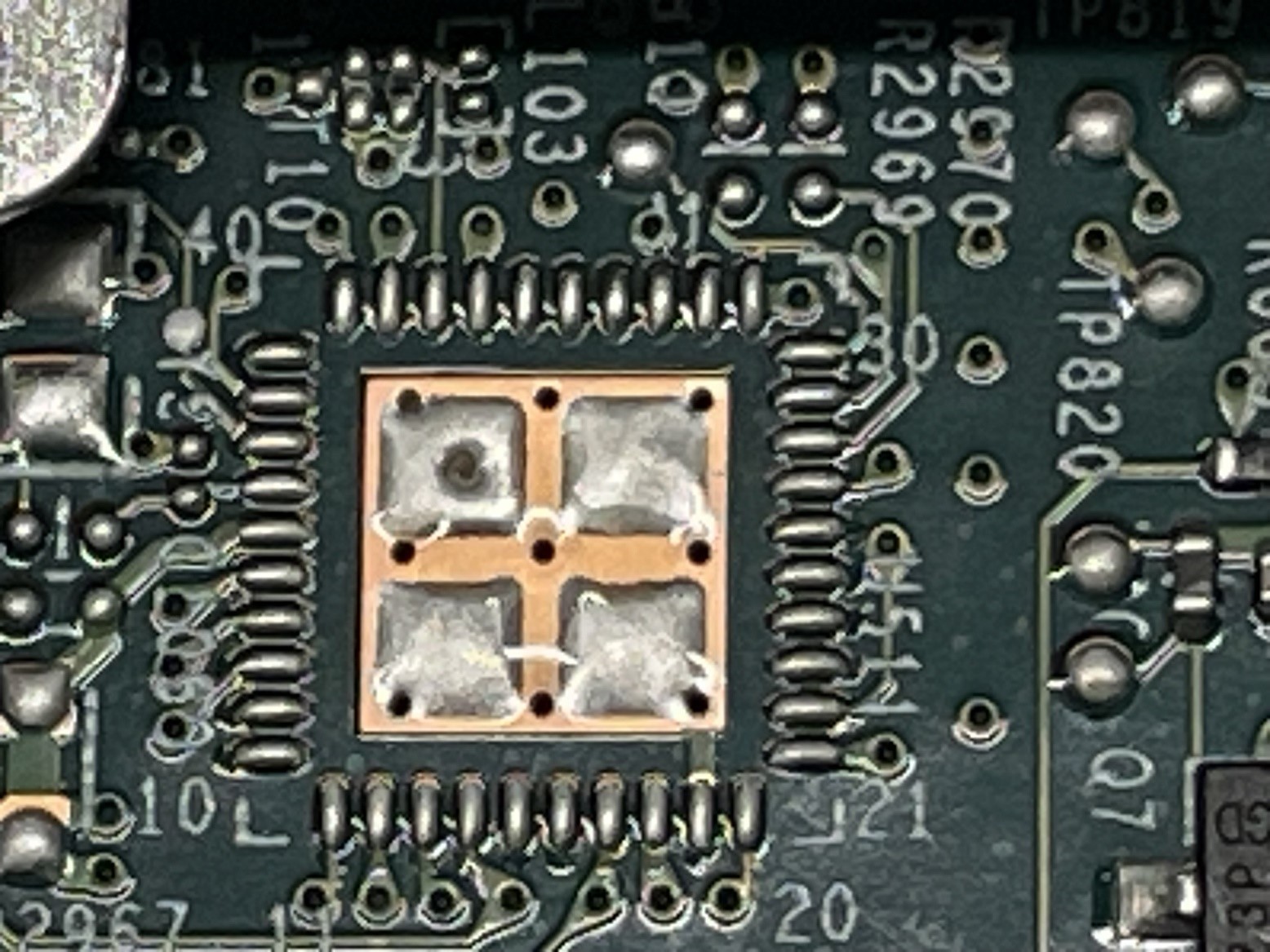
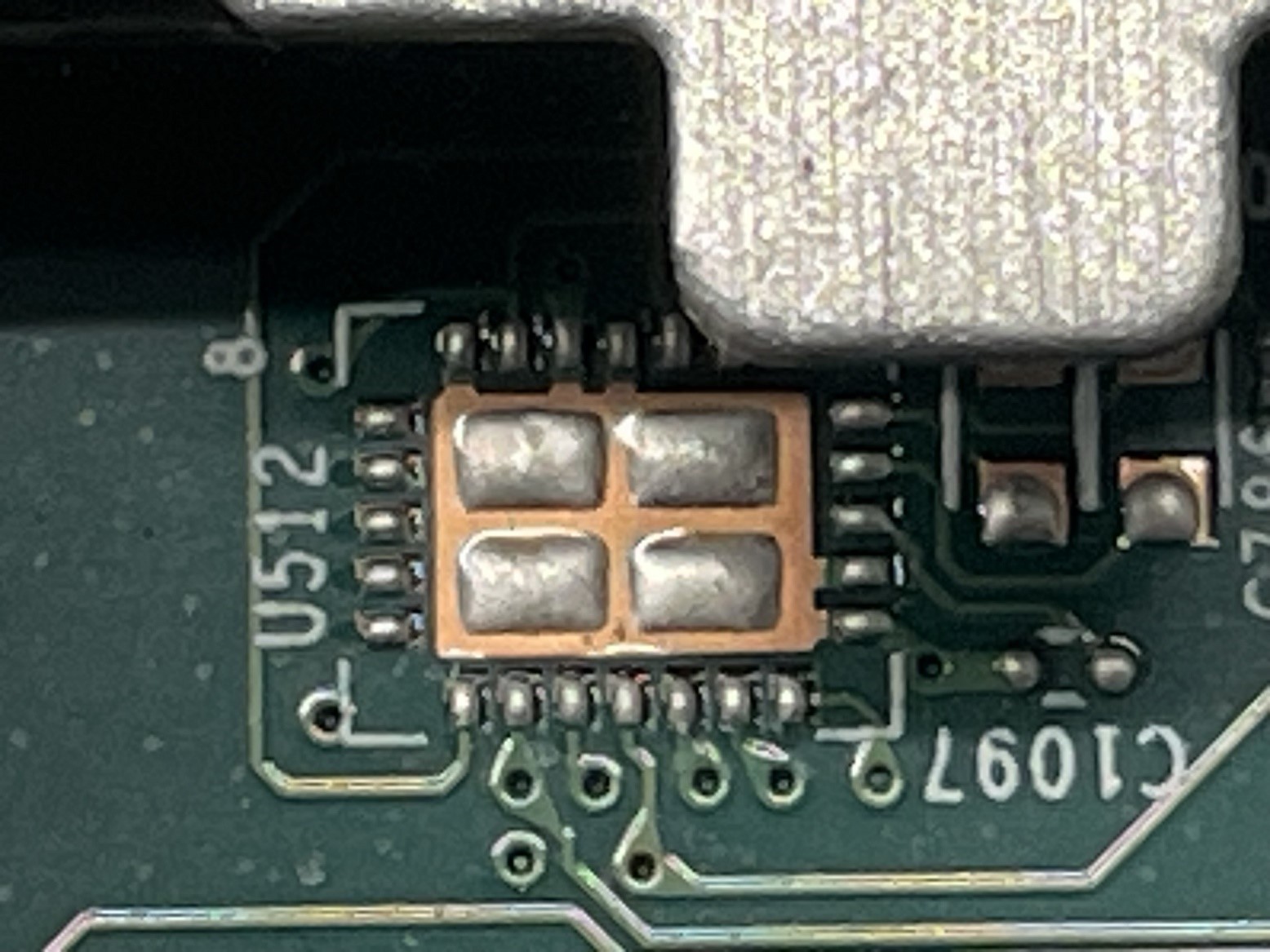
Concluding Remarks
And that’s a wrap for this teardown! The circuit design is refreshingly well thought out. From implementing the low-cost but well-regarded flyback circuitry for the power. To the good quality audio amplifier filters, allowing this Symfonisk Speaker to produce the great sound quality Sonos is known for.
The circuit board is logically laid out as well in a sequential flow, minimizing onboard interference between the functional blocks. And the overall clever assembly of the Symfonisk efficiently dissipates the heat generated to the rear of the aluminum case, away from the speakers in the front. This minimizes the heat degradation to the speaker magnets.
I hope you have enjoyed reading about the inner intricacies of the IKEA-Sonos Symfonisk Speaker lamp as much as I enjoyed discovering and decoding them.